Part 22: 3000-3010-Consolidation
Consolidation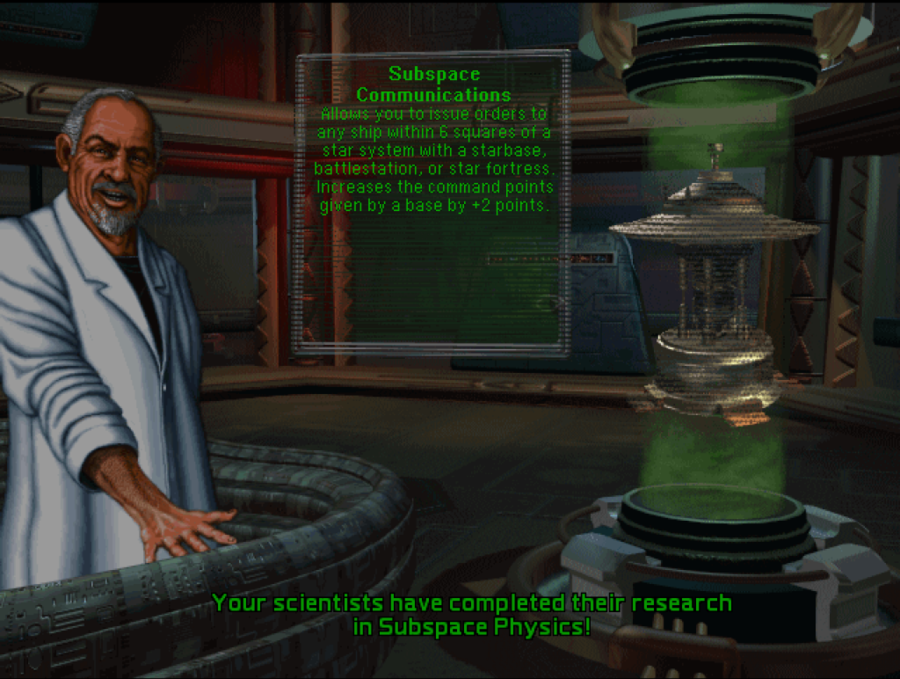
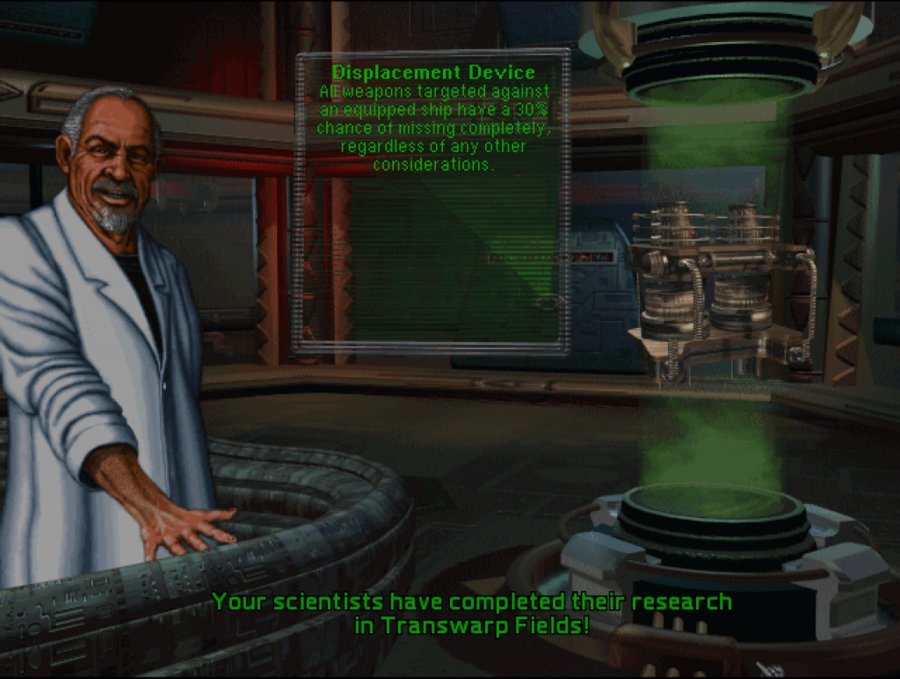
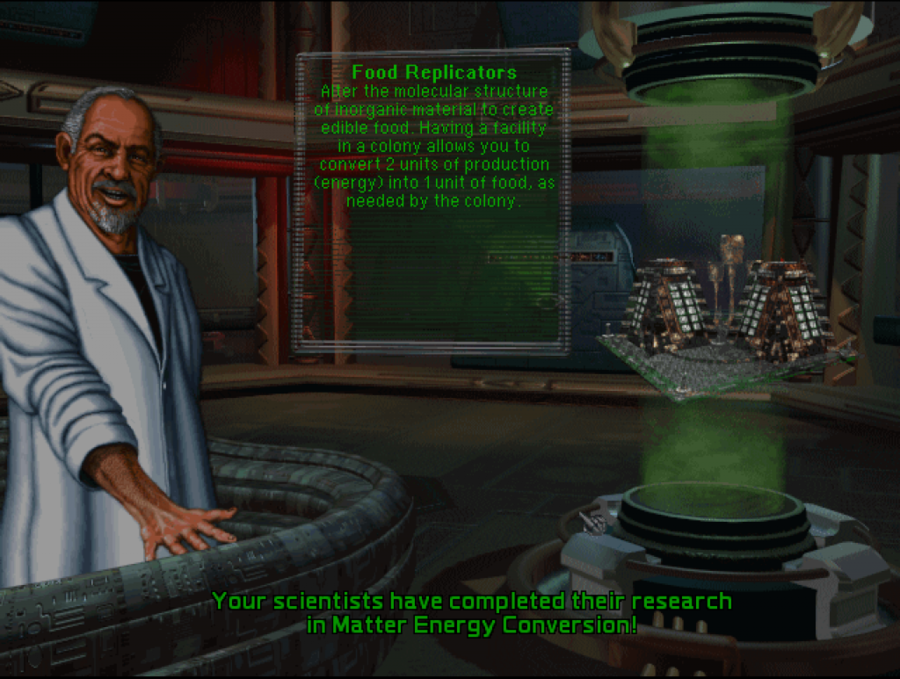
The United Republic begins to move into the new millenium. In 3001, breakthroughs in the creation of subspace pocket dimensions allow the tachyons used in tachyon communications to be funneled into far tighter beams for transmission at interstellar distances, reducing latencies and ensuring that information travels across the United Republic more quickly. Only two years later, high-output electronic warfare systems capable of baffling sensors all across the electromagnetic spectrum are unveiled. Even visible light telescopes suffer severe signal degradation from the interference from these jamming devices, which promise to make it much more difficult to set up accurate firing solutions on vessels equipped with them. This breakthrough is followed by a proof of concept demonstration of food replication done as a publicity stunt by Mikhailovich Interplanetary researchers working on the next big breakthrough in ship defenses. Food replication technology is clearly not commercially viable, and so this technology is not deployed on any large scale. Meanwhile, a new AI colony is established on Bhargava in the Kolath system, while the Glorious is completed at Ezra Alpha.
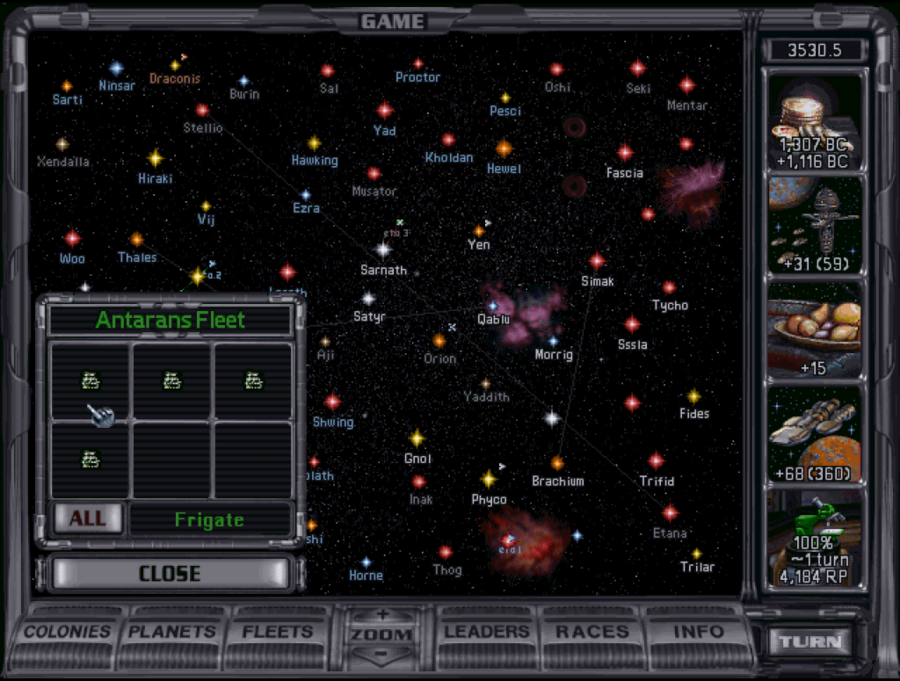
In 3005, a fleet of four Antaran scouts appears three years out from the Sarnath system in the Nations. There is little the United Republic can do as it advances towards its target.
The Antarans get to attack their target and then jump back to their home dimension before a third party can get a chance to attack them. There's really nothing we can do to help the Sakkra here.
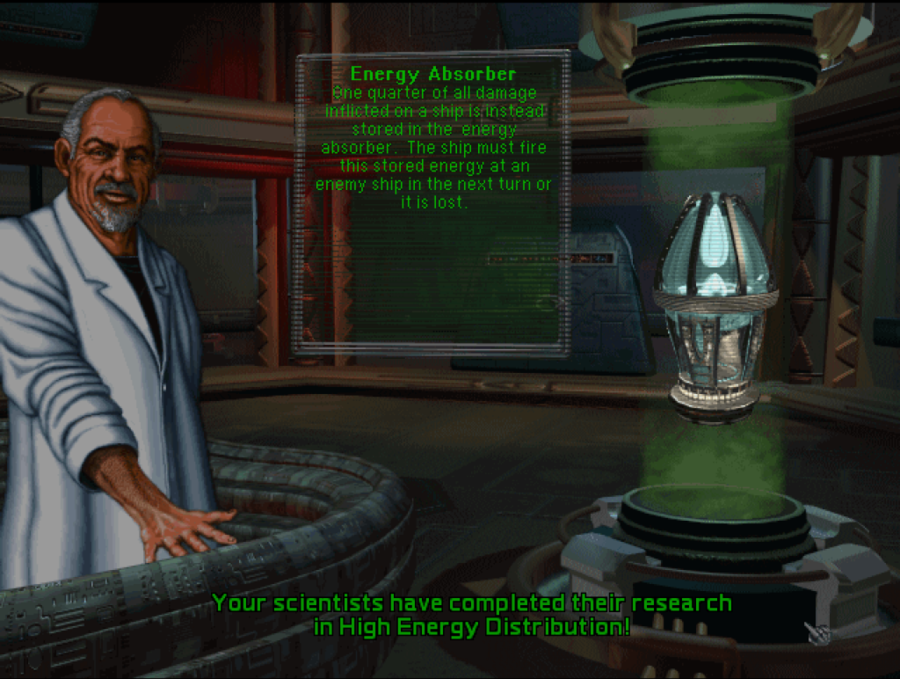
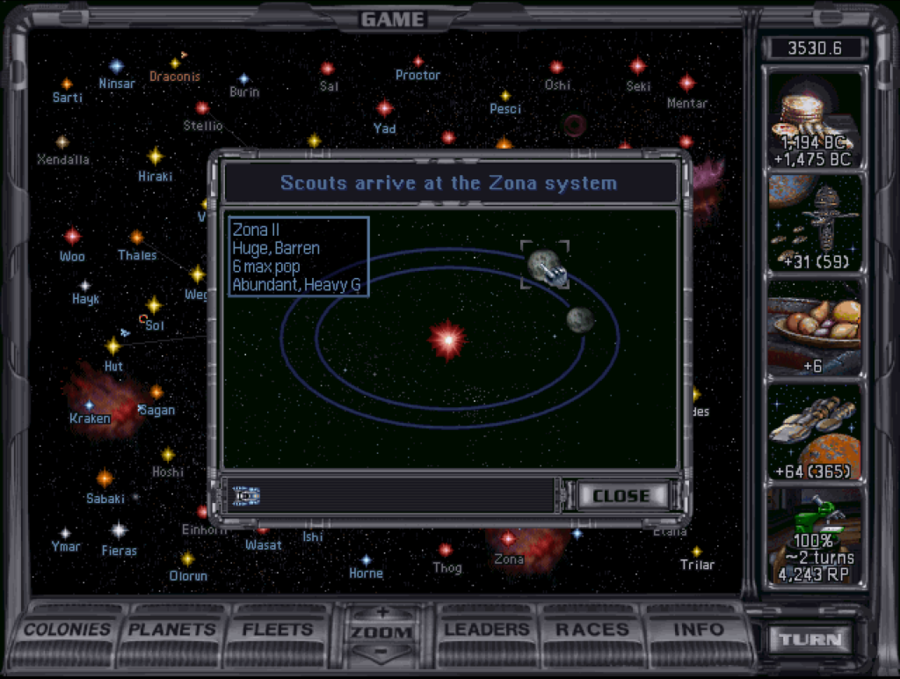
In 3006, Mikhailovich Interplanetary unveils a new breakthrough: an adaptation of shield technology that bleeds off some energy from incoming events, then discharges the potential energy stored in the field around the ship as an enormous focused bolt of photons, making the ship itself essentially the most powerful laser yet designed. Meanwhile, the RES Neil Armstrong explores the Zona system, finding a pair of lifeless worlds with reasonable mineral resources there.
I had forgotten how pretty the Energy Absorber looks.
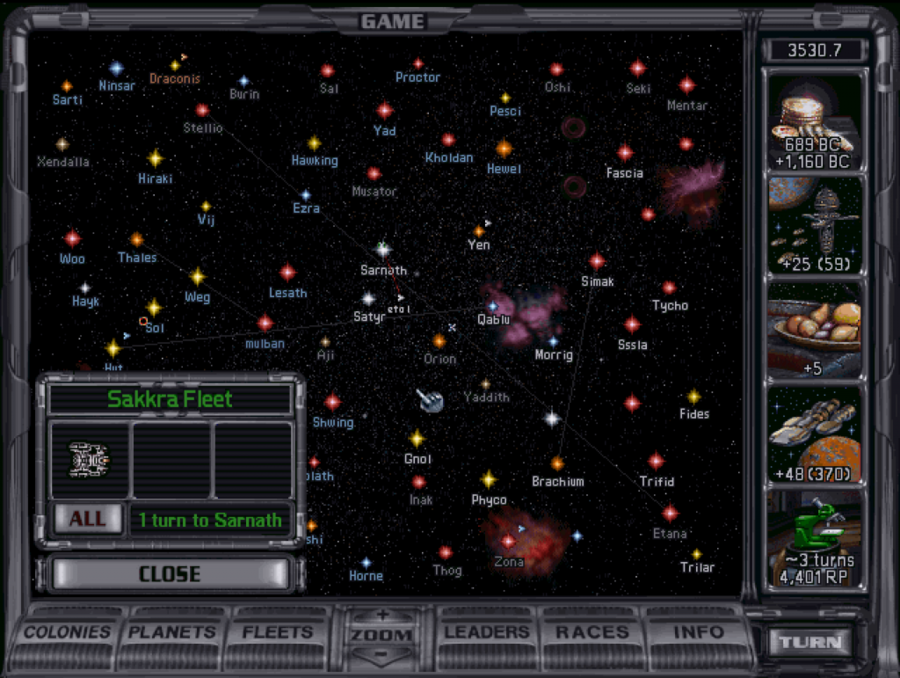
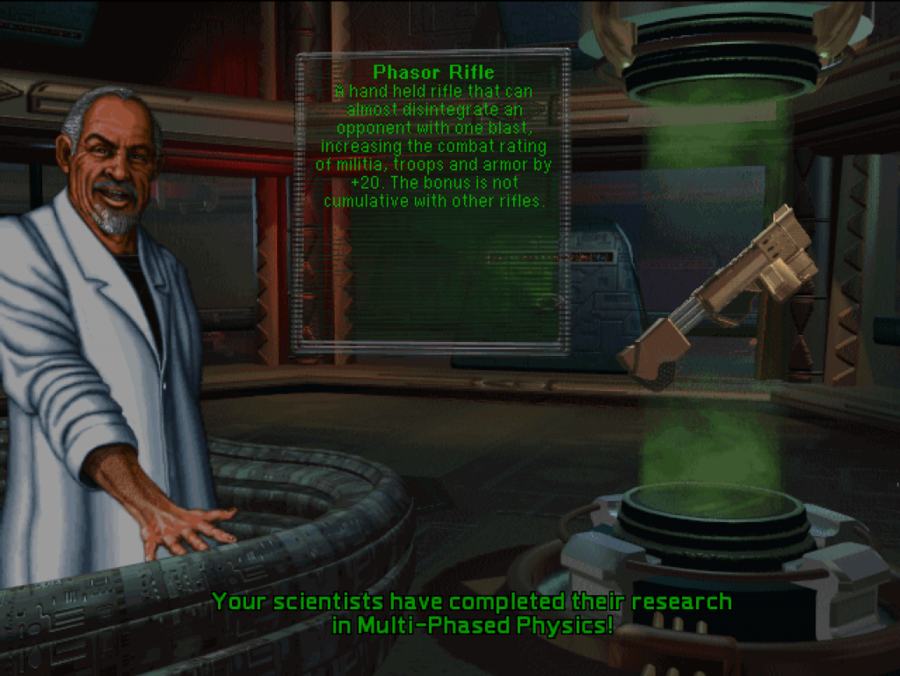
A year after this, the Nations deploy a warship to reinforce Sarnath, while the Bauer-Faust Group unveils a refinement of the multiphase cannon, firing a less powerful beam that will not collapse while travelling through an atmosphere, but only when encountering denser materials. The energy released when the beam opens its microportal in its target is sufficient that the target dummies used in the test firing of the new weapons are blasted apart into burning fragments that pepper the firing range around them. The effect against live targets should be no less dramatic, and potentially hazardous to those standing near a live target. Meanwhile, Proctor Beta and the planet of Newton in the Hoshi system have new colonies established on them.
No tidy antiseptic disappearing of the target with no side effects here, in fitting with the attempt for verisimilitude I am going for and the 'practically' in 'practically disintegrates'.
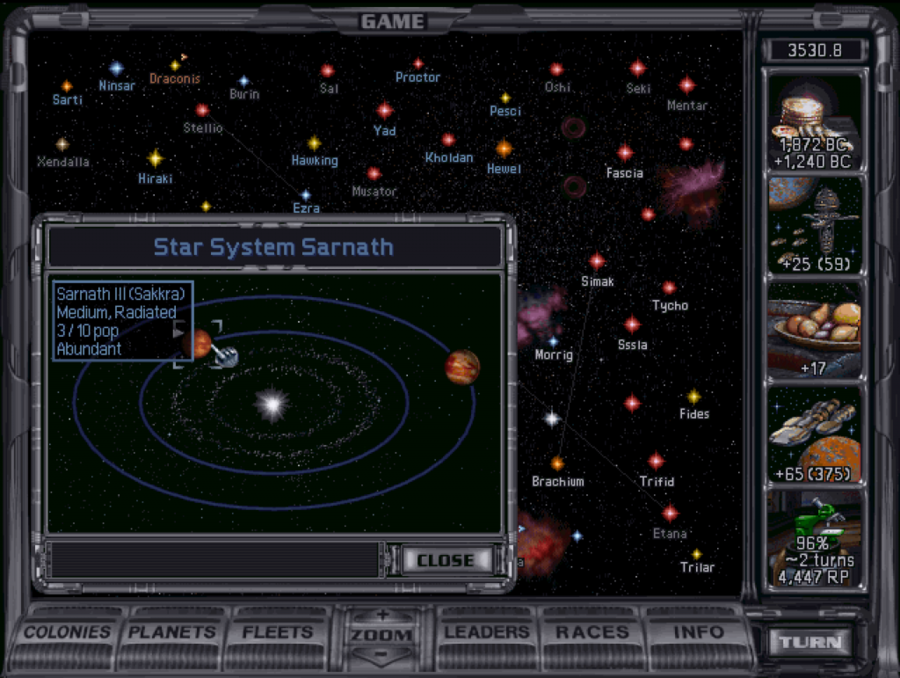
In 3008, the Antaran scouts arrive at Sarnath, obliterating the defending forces and unleashing a heavy bombardment on the surface of the inhabited planet that kills seven billion. With their munitions expended, the Antaran scouts retreat back to their home dimension.
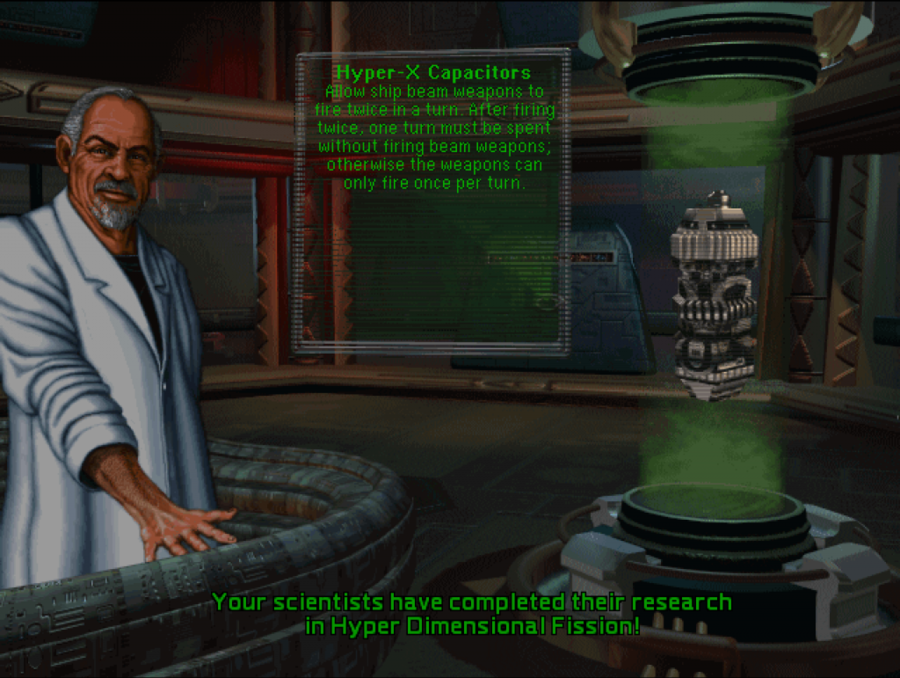
A year later, Williamson-Lin researchers develop rapid-discharge power storage systems which can be integrated with ship weapon systems, allowing a full volley from a ship before having to touch the power generated by the ship's reactor, thus allowing the ship to fire all its weapons twice within seconds of coming within range of the enemy. In the same year, both Proctor Gamma and the largely ocean-covered world of Srral in the Sabaki system are colonised.
You can keep firing at the normal rate for the rest of the battle, so what this does is allow a double-strength opening volley. Not bad, actually.
The United Republic in 3010
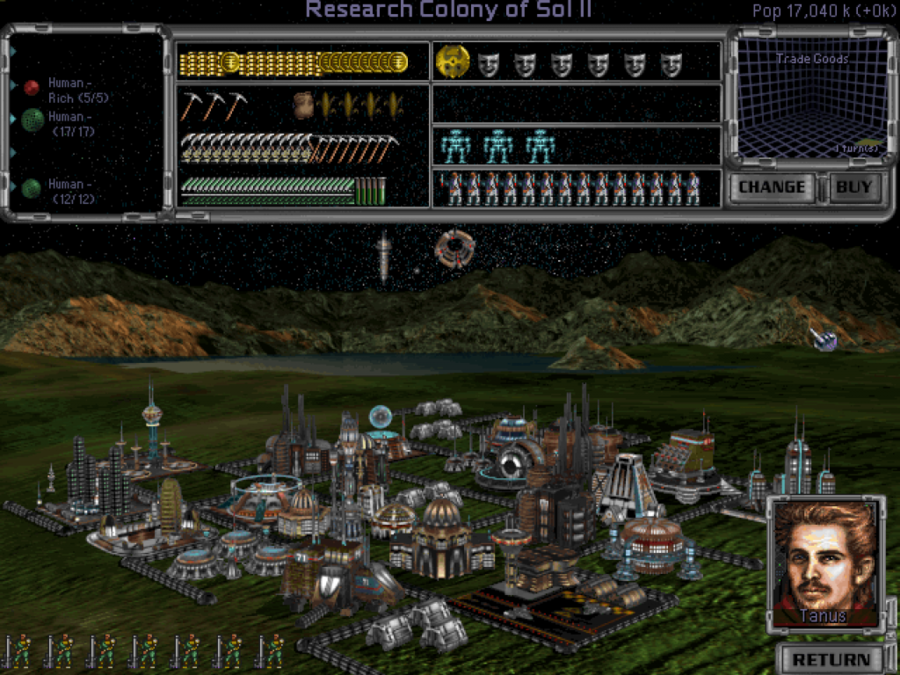
Conditions on Earth are largely unchanged from a decade ago- the planet is essentially as developed as current Republican technology allows. Earth is the political and economic heart of the greatest civilisation in the galaxy.
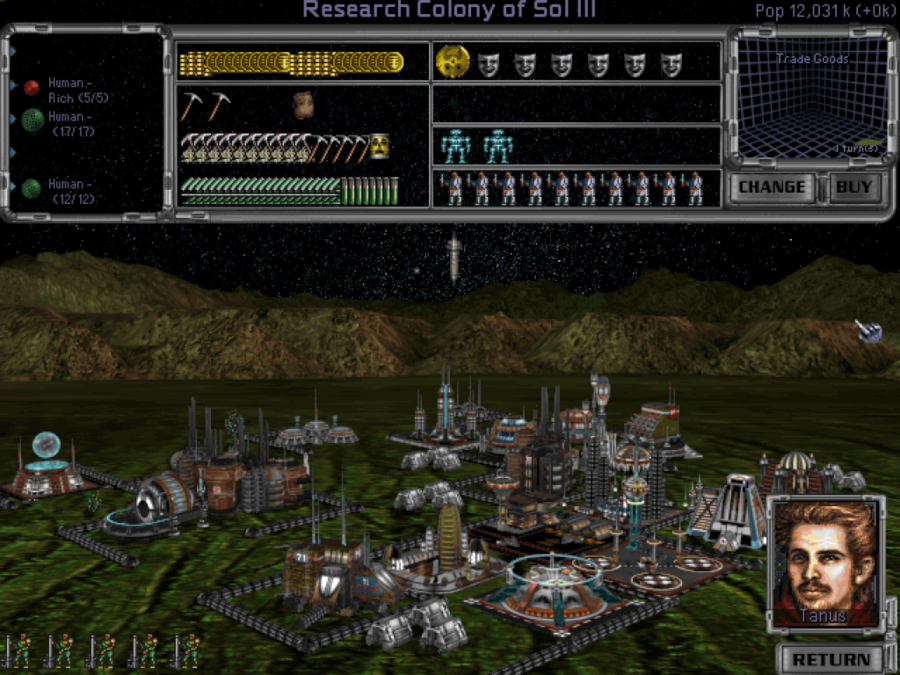
With new advanced foundry facilities processing the output of mines on Mars and in the Solar asteroid belt, Mars now has greater industrial output than ever before. The planet produces huge amounts of consumer and capital goods for domestic use and for export to other worlds.
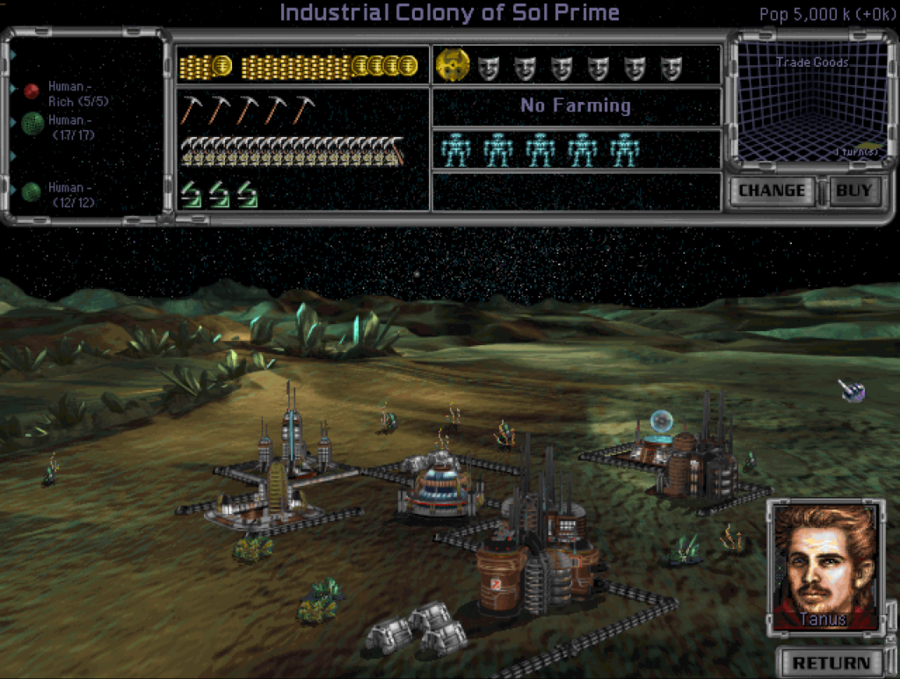
Mercury now supports mines deep into the mantle, which fuel a massive output of goods for the markets of the United Republic. The AIs of Mercury enjoy immense wealth.
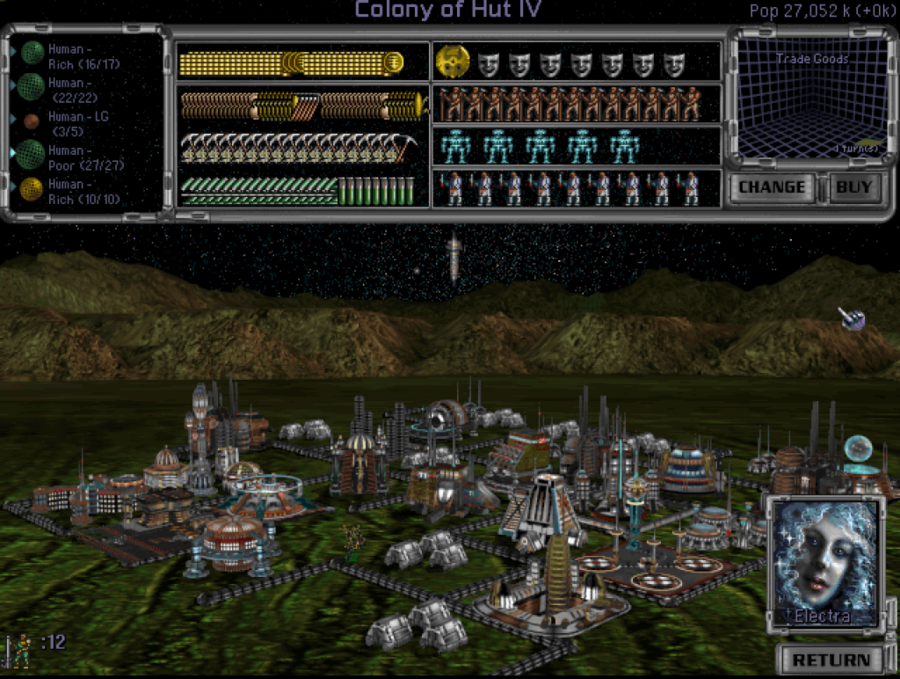
With all systems within Human space colonised or soon to be colonised, Nieuw Vlaanderen no longer musters colony fleets to establish settlement on new worlds. Its heavy industry is instead focused on more goods for Republican markets, providing a wide array of items needed by various industries or desired by consumers.
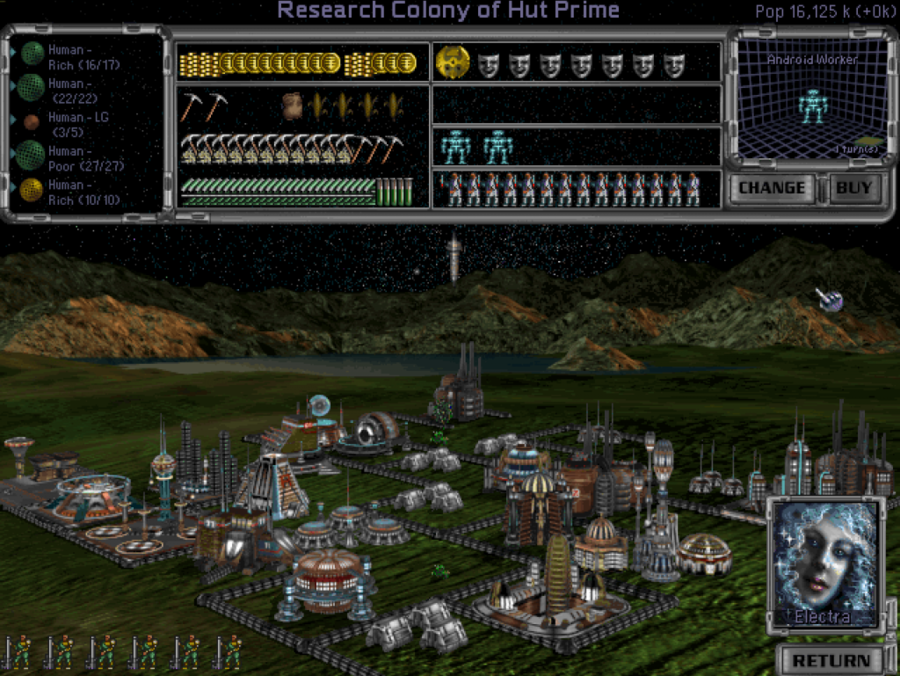
The Forge now has stable tunnels deep into its mantle providing minerals for its industry, and its biological population has plateaued at approximately 14 billion persons. Heavy industry on the Forge is now controlled by about one million industrial AIs, with half a million more still to be created.
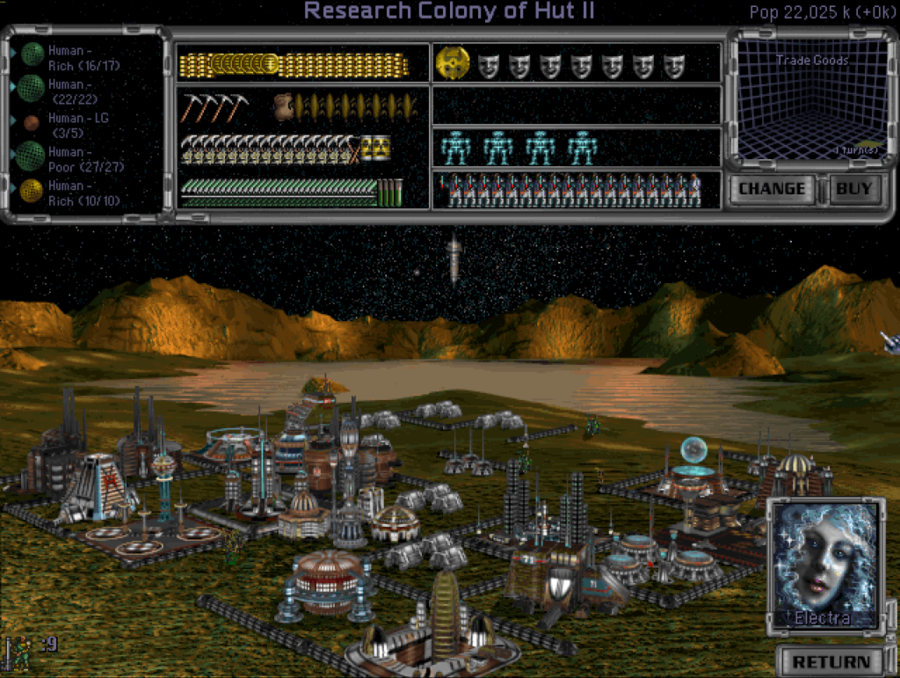
The Anvil, like the Forge, now benefits from deep mining, and has two million industrial AIs that now operate its heavy industry. Industrial waste disposal is a modest expense for local industry, which, like the heavy industry in many other Republican core worlds, now helps supply a massive expansion of domestic trade that has bolstered living standards across the United Republic.
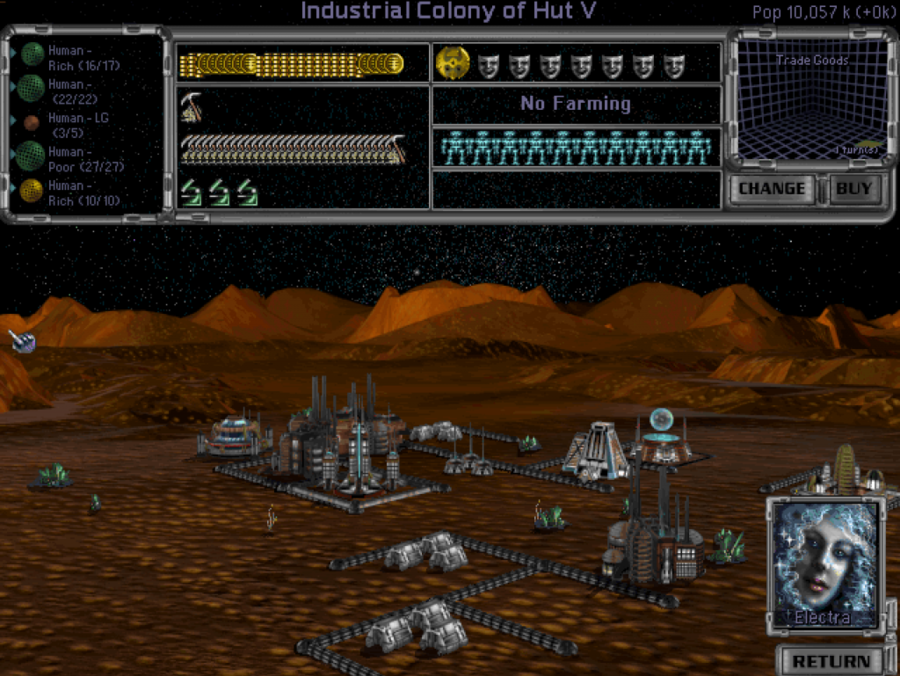
Fool's Hope remains in essentially the same position it occupied a decade ago, a wealthy and successful contributor to the Republican economy.
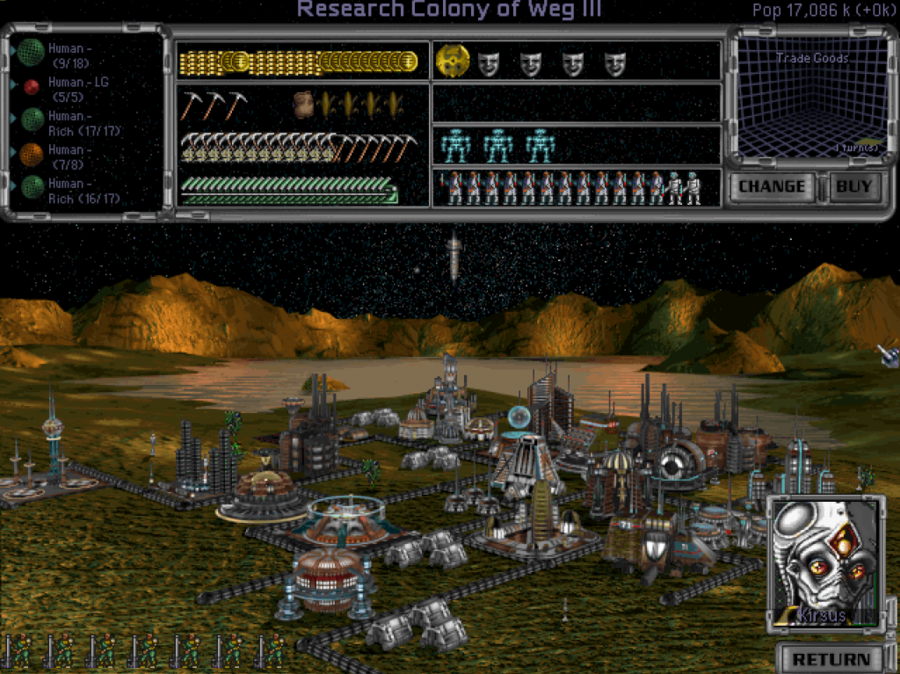
With completion of the refits of the naval vessels that put in at New Greenland, New Greenland has been able to build mantle-depth mines that now fuel massive production of goods for use on New Greenland and across Republican space.
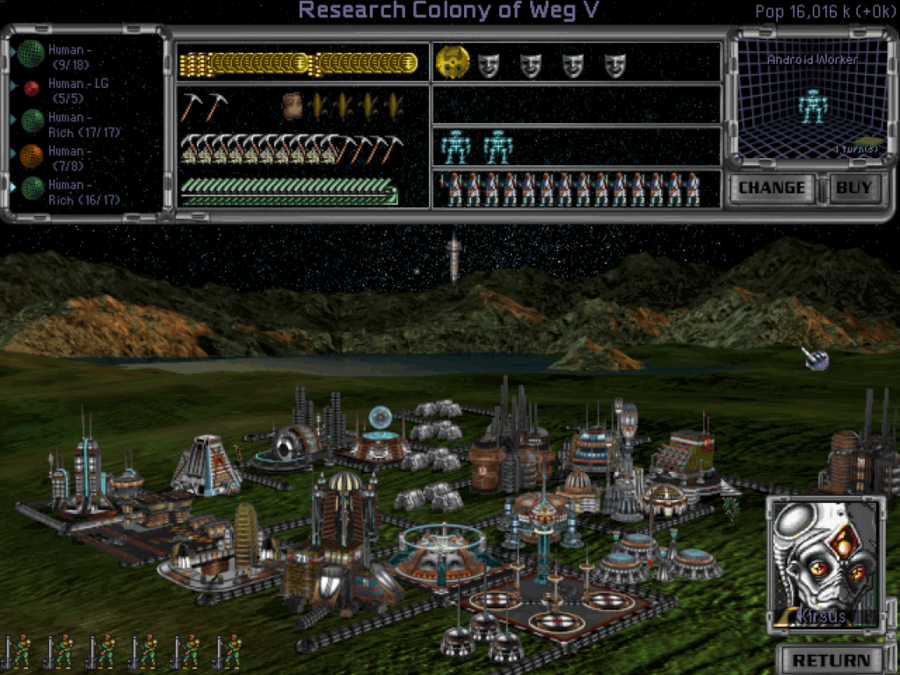
New foundries and mines and new AI-controlled heavy industry have bolstered Wotan's wealth over the past decade, while the world's population has plateaued at approximately 14 billion. A last half-million industrial AIs remain to be built on Wotan's surface.
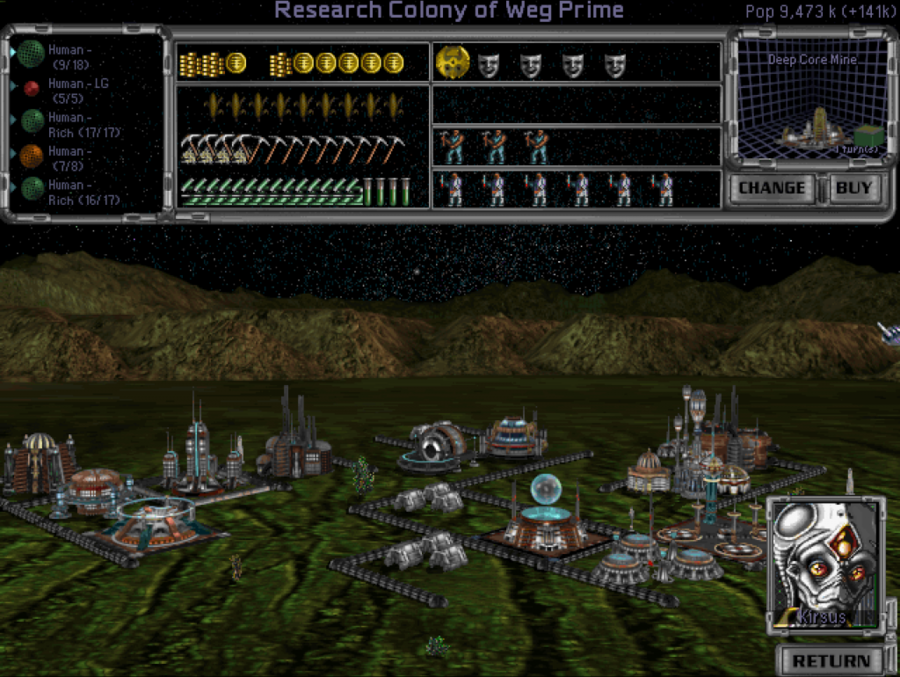
Ecological engineering has supplied Thor with abundant water and a sophisticated, Earth-like biosystem. The population is growing rapidly, and new industrial development is underway to make this already wealthy world even more wealthy.

Improved education, advanced foundries, and mines to exploit the minerals and metals of Loki's deep interior have bolstered productivity and wages, but the rapid development has led to lengthening work hours for Loki's workforce. Advanced recycling systems to fuel expanded industry are being funded by investors.
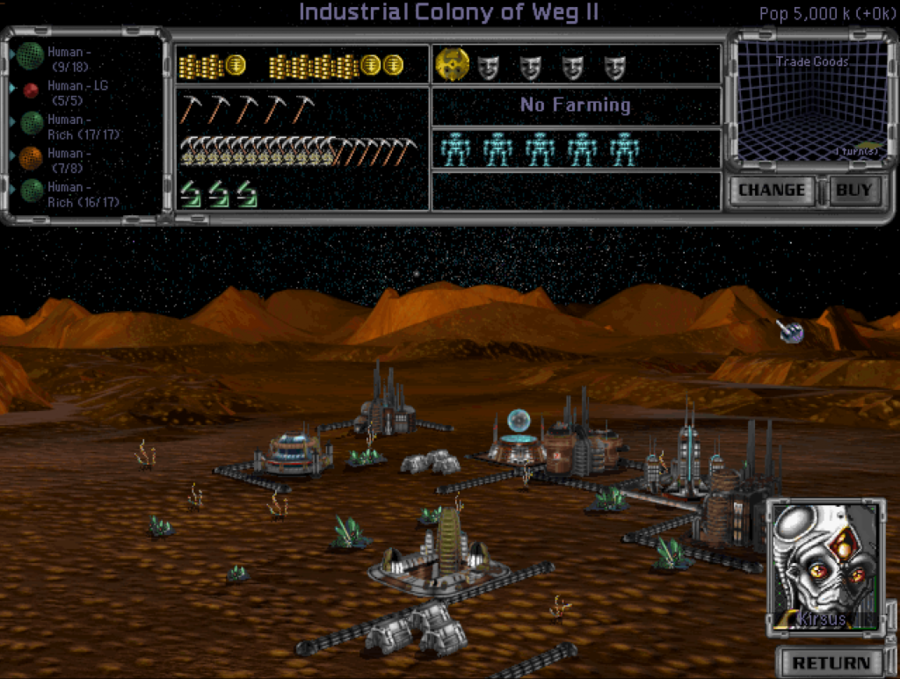
Hel is, in many ways, unchanged from a decade ago. Its resources are essentially fully exploited by the local AIs, which produce a wide array of goods for use and trade.
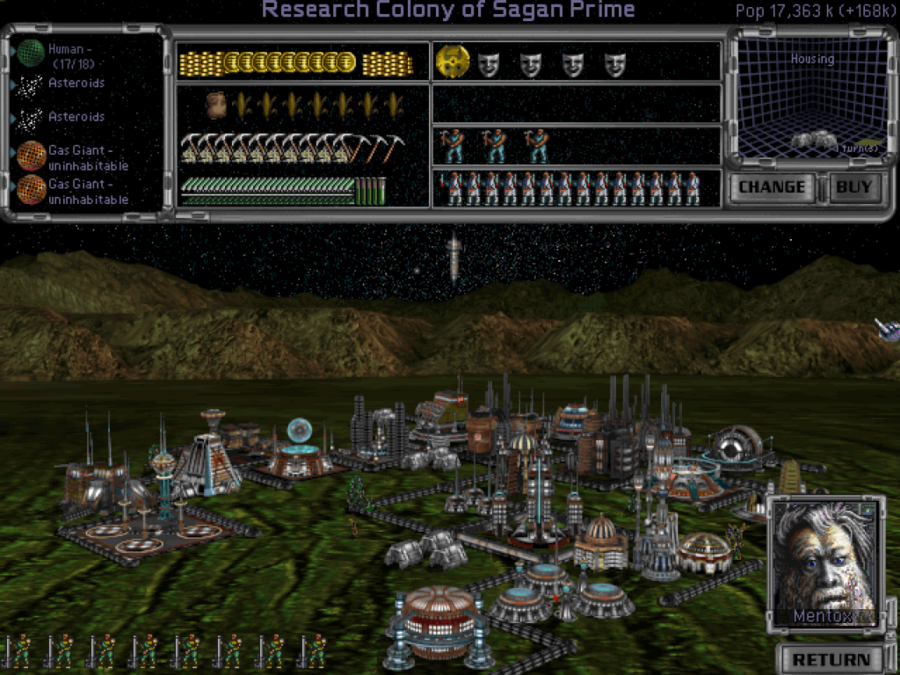
New mining technology has strengthened Laaxaayik's heavy industry, leaving the world very heavily developed. New immigration to take advantage of the high quality of life and remaining space for living on Laaxaayik has boomed, and the population now exceeds 17 billion.
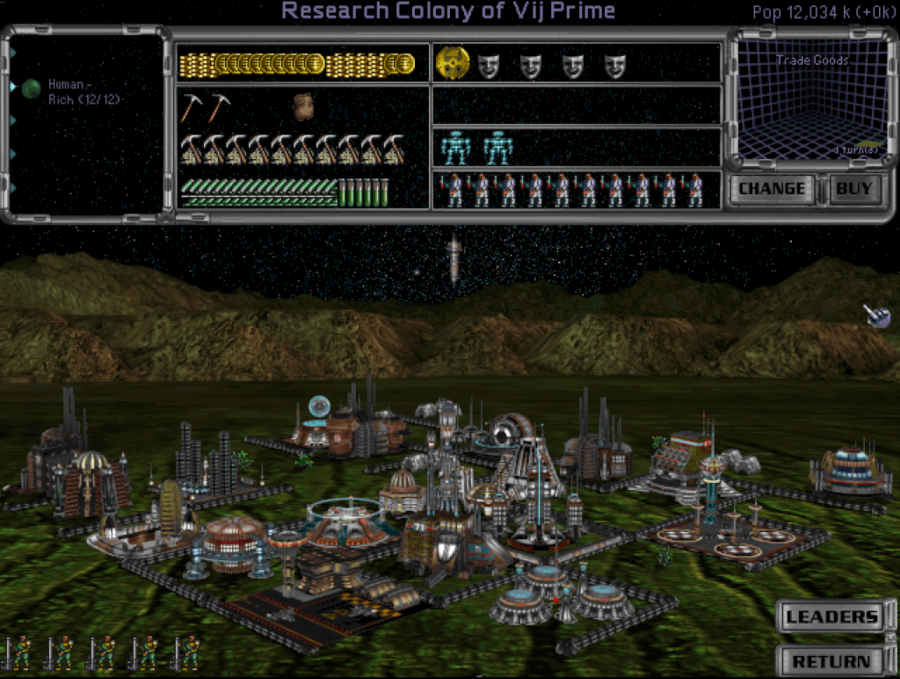
Advanced foundries and expansion of mining into Cherenkov's mantle have ensured the world's industrial productivity is extremely high, and its heavy industry now contributes to the booming trade networks of the United Republic. Cherenkov is in all senses a fully-developed core world with the wealth appropriate to that status.
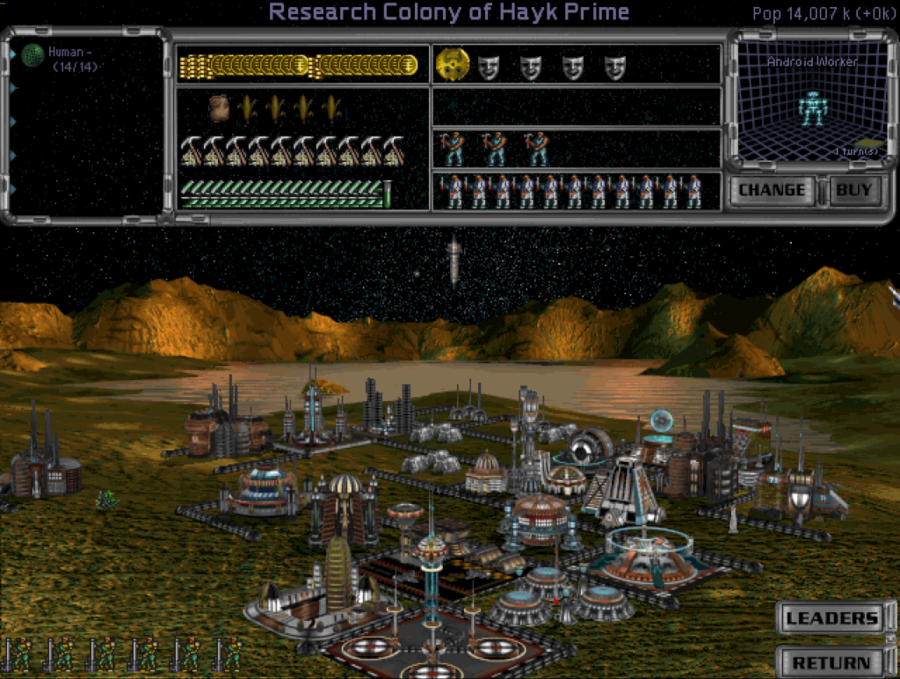
Naraka's population has just recently plateaued at approximately 14 billion, and the new industrial technologies have been fully incorporated into the local economy. New industrial AIs to administer local heavy industry are being created on the planet.

Sheol now enjoys the benefits of advanced foundries and deep mining into its mantle, and, like Laaxaayik, is enjoying a boom of immigration and high population growth. Population should exceed 13 billion persons within a year.
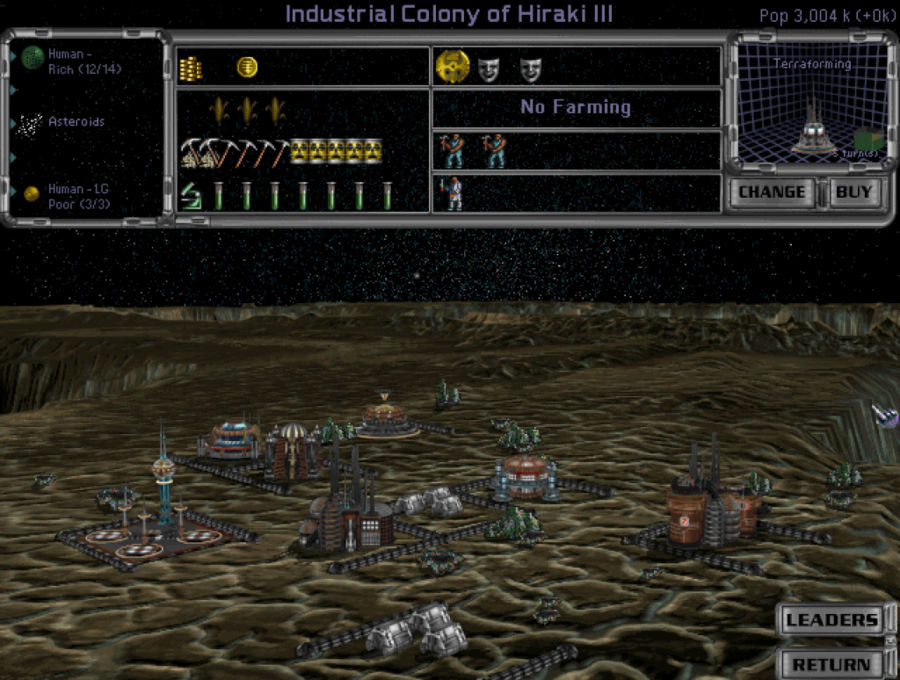
Acheron has deployed Puppeteer technology, enjoyed a diversification of the local economy, and had facilities constructed to intensify local gravity to a more comfortable level. Ecological engineering is underway to introduce water, a biosphere, and a breathable atmosphere.
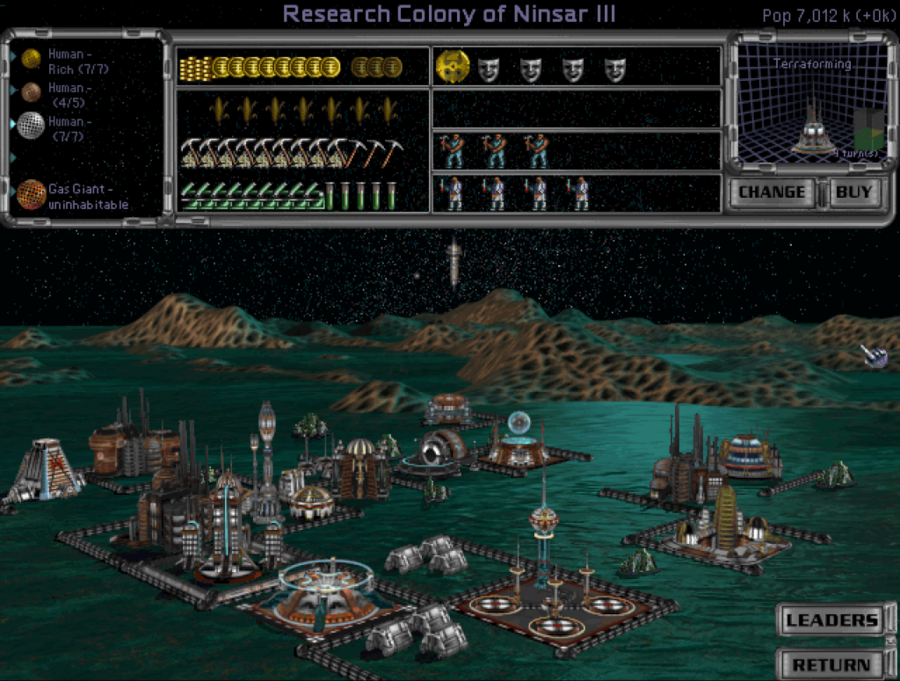
New foundries and mines have strengthened industrial output on Faraway, but the development on the world has begun to push work hours up for many members of the workforce, as staffing requirements for the planetary infrastructure have soared. Local industry has been supporting an ecological engineering program to thicken the atmosphere and melt off local ice cover, which should be completed within the next few years.
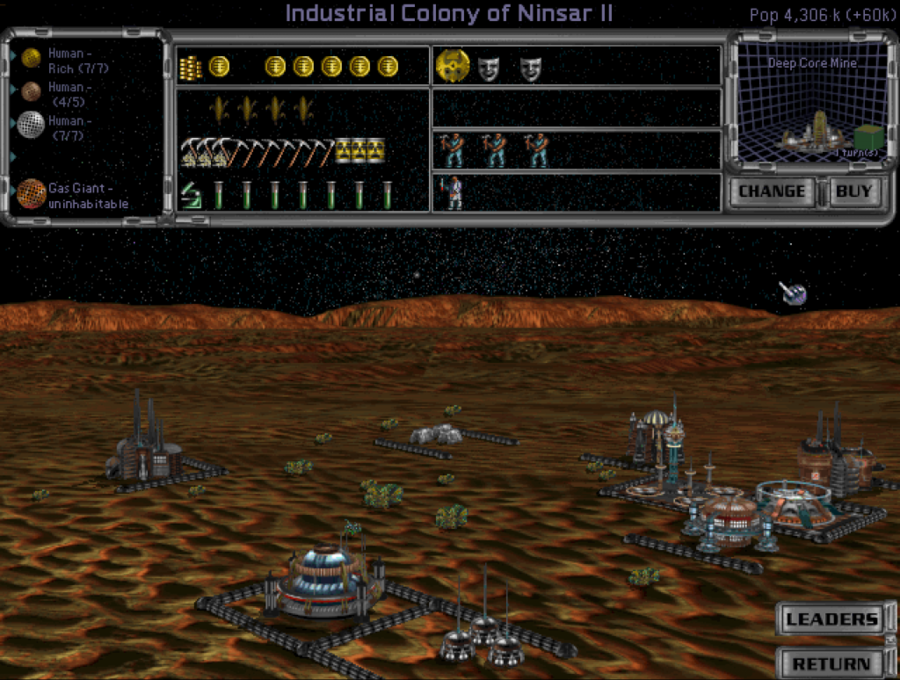
After the first round of ecological engineering, Parch remains very hot and dry, but it has some water, oxygen in its atmosphere, and a primitive biosystem. It suffers from the usual violent weather of such worlds, but is well-prepared to handle the added wear on its cities. New mining tunnels deep beneath the surface are being constructed, helping to ensure the planet's industrial output is maximised.

Inferno has continued to enjoy the wealth it has built for itself over the past decade. It remains an important source of goods for the United Republic's civilian economy.
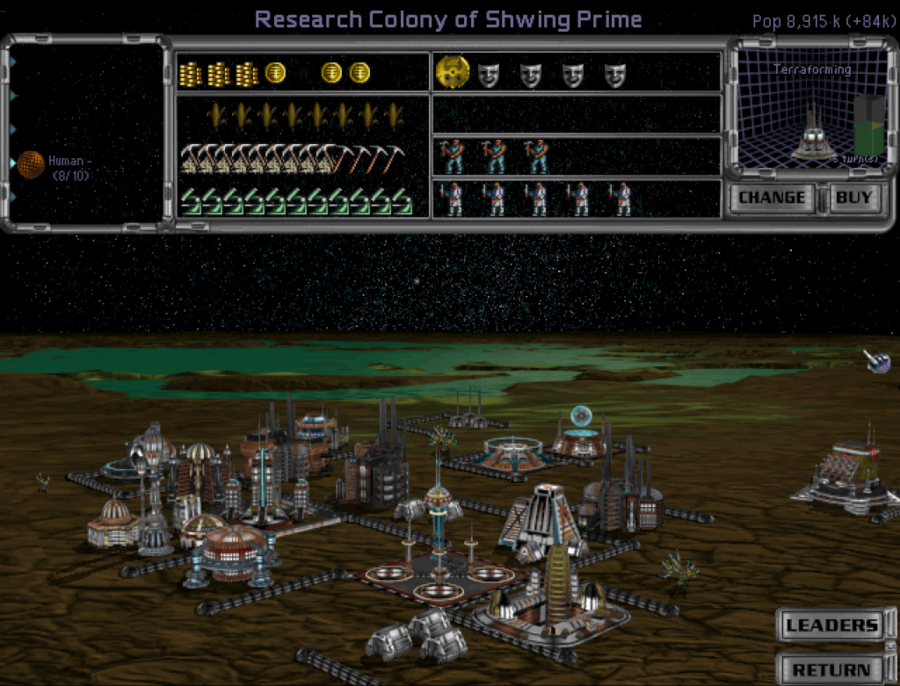
New foundries, new factories using advanced recycling technologies, and new mine tunnels ensuring Crossroads can exploit the wealth deep within its mantle have greatly boosted productivity on that world, and wages have been rising on the planet. New ecological engineering efforts have been introducing new life forms to the planet and moderating elements of the local biosystem.
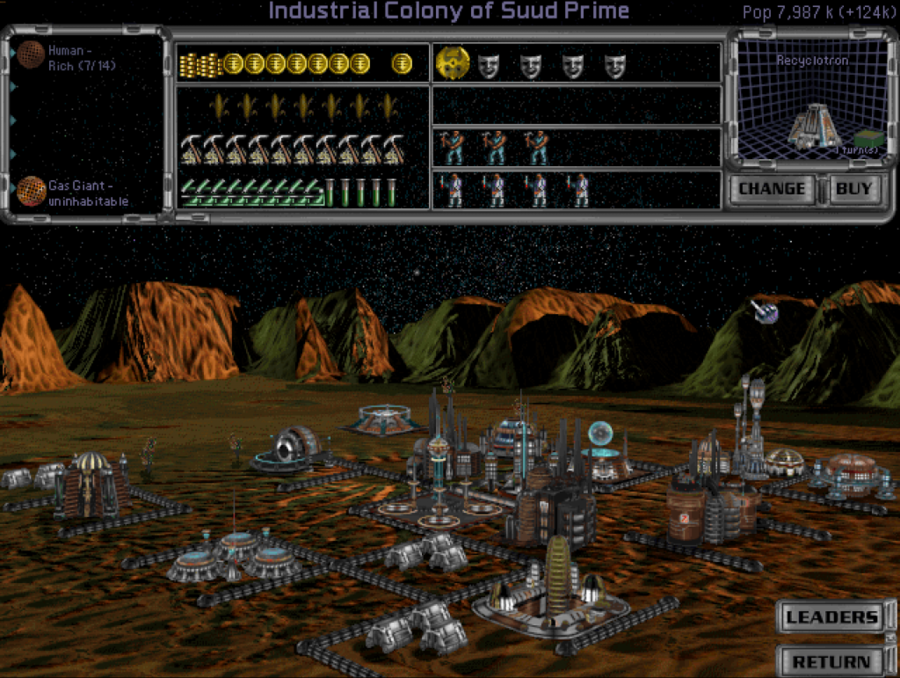
Pasteur has built up significant new industrial infrastructure over the past decade. It has also seen the awakening of APOLLO ATLASBUILT and APOLLO's introduction of an ATLASBUILT educational system. Local incomes have increased greatly over the past decade. APOLLO appears as a smiling, handsome youth with curly blonde hair, dressed for outdoor leisure in a short-sleeved shirt and slacks.

Chukwu now supports mining tunnels into the mantle, and the industrial expansion this permits has helped accelerate the ecological engineering to moderate Chukwu's current violent climate.
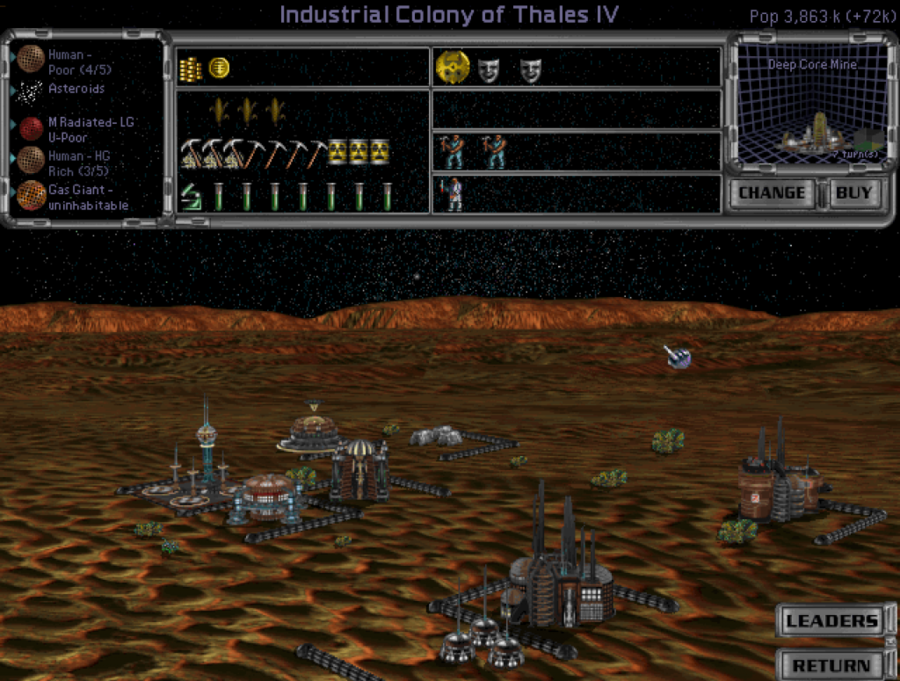
Haqqmali has made great strides over the past decade, and now supports many of the fundamentals of a developed Republican economy, providing an increased quality of life for its inhabitants. Expansion of mining deeper into the planet should increase industrial output soon.
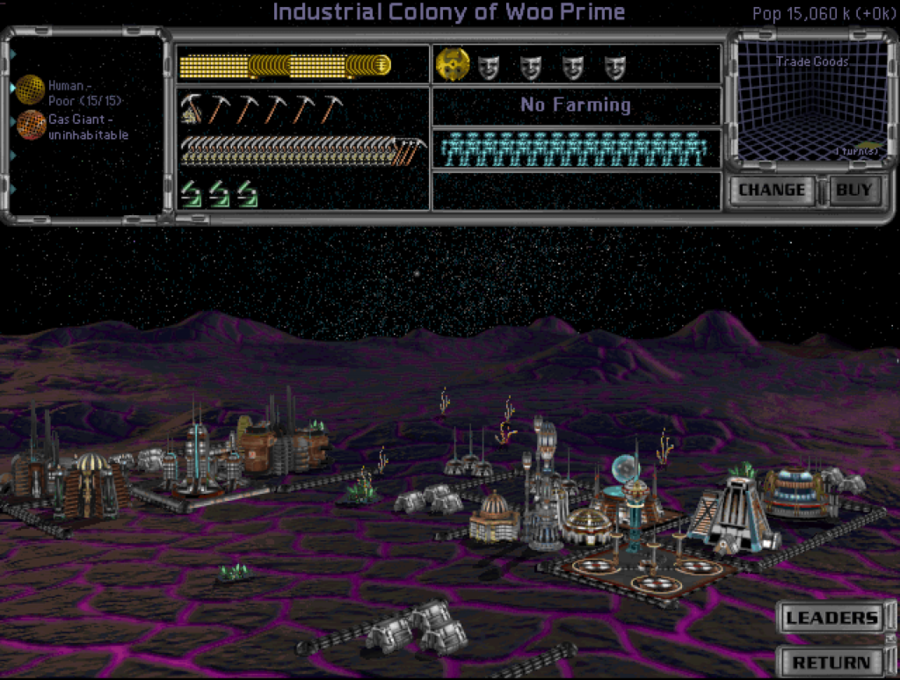
Harper's population has stabilised at approximately 7.5 million AIs. This population is high enough that it has justified ARTEMIS investing into advanced educational methods for the local AIs, helping to ensure that industrial efficiency on Harper stays at the very highest levels. The immense industrial output of the world provides new goods for persons all across the United Republic.
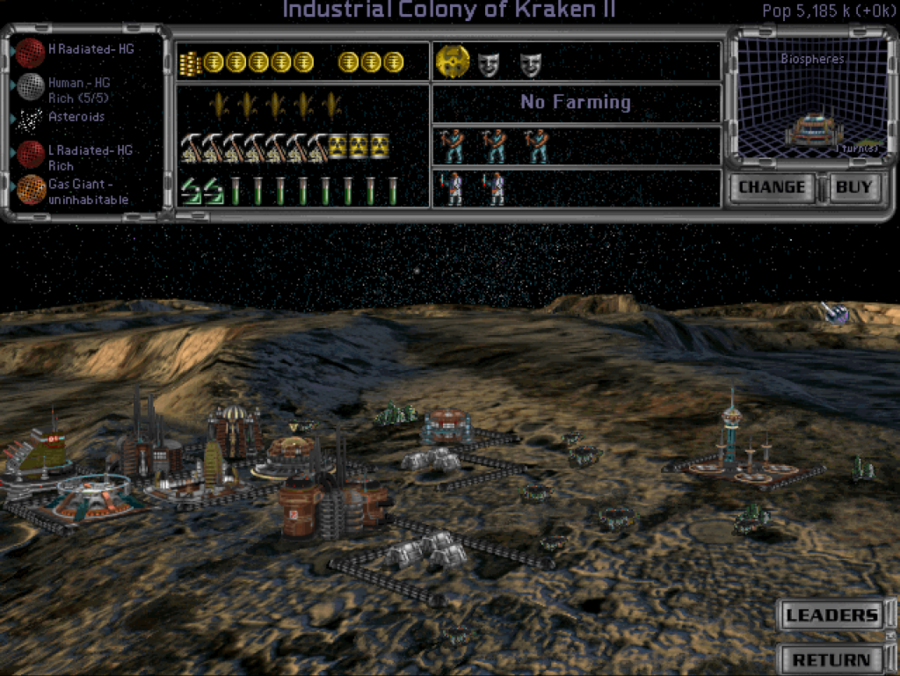
The population of Polybotes has, for the moment, stabilised at somewhat over five billion persons. The planet now supports a local technology industry, Puppeteer technology in its industry, and deep mining shafts far below the surface, as well as facilities to process industrial waste safely. Despite improved processing of industrial waste, the expense of dealing with waste disposal has grown over the past decade with expanding industrial output. Arcology-cities to permit further growth of the population are under construction across the planet.

Bhargava currently only supports a half-million industrial AIs, who are currently focused on expanding the colony. The world is a lonely frontier outpost at the edge of Republican space.
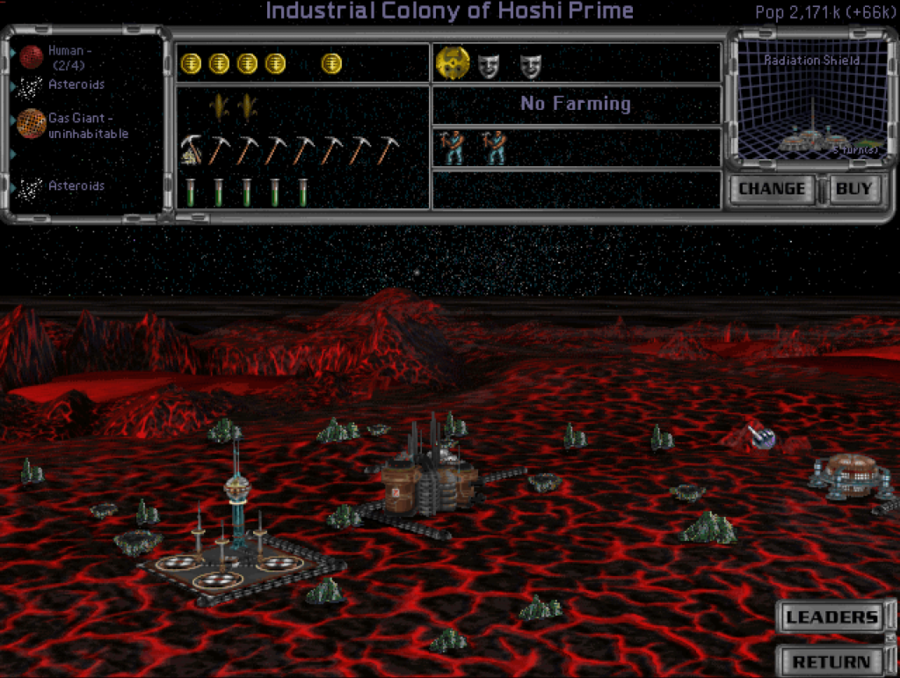
Newton supports facilities for large-scale trade with the rest of the United Republic, basic modern industrial infrastructure, and a small local technology industry, leaving it relatively primitive, but still well-connected to the larger Republican economy. Radiation shielding to protect the world from the harshness of Hoshi is under construction.
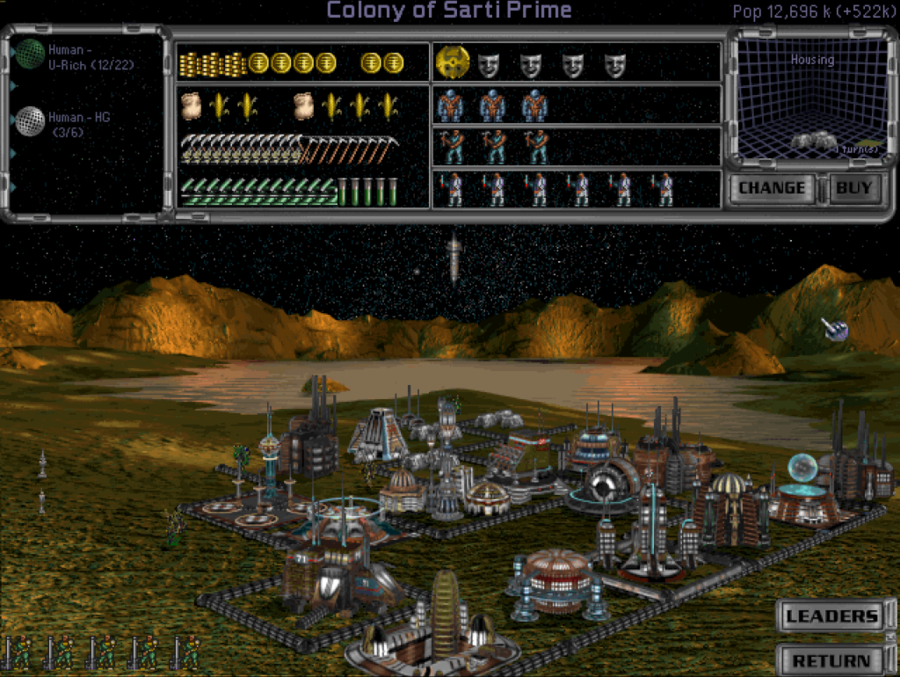
Chezak now supports factories using advanced recycling technology, mines deep into the planet, equatorial missile defenses, its first arcology-cities, and expanded waste processing facilities, and the population has been booming due to immigration and reproduction. Many ordinary Zetel have seen significant boosts in their income now that even their scrap has market value, and advanced manufactured goods are now available to even the poorest Zetel. Many Zetel take pride in knowing that even their species has Senators in the Great Senate.
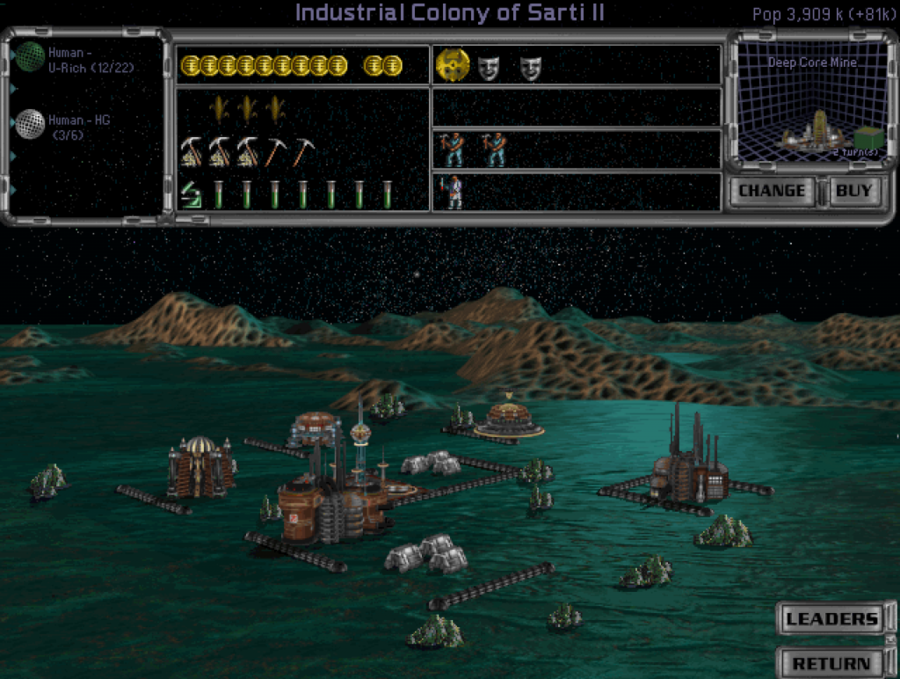
More sophisticated business practises and use of Puppeteer technology have helped improve incomes and quality of life on Everest. Mining tunnels deep beneath the surface are being constructed in order to access the mineral wealth of Everest's mantle.
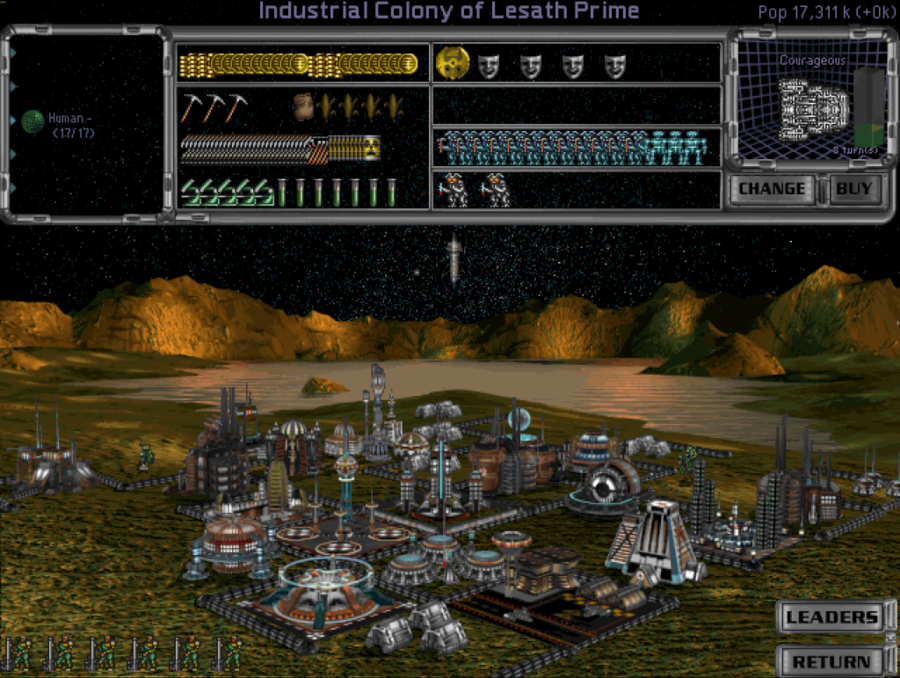
Lesath Alpha's population has stabilised at approximately 14 billion, with 1.5 million industrial AIs supplementing the Klackon industrial workforce. Heavy industry on Lesath Alpha enjoys a constant influx of Naval money, and the sector is always hungry for workers. The Courageous is under construction over the planet, and should be completed within eight years.
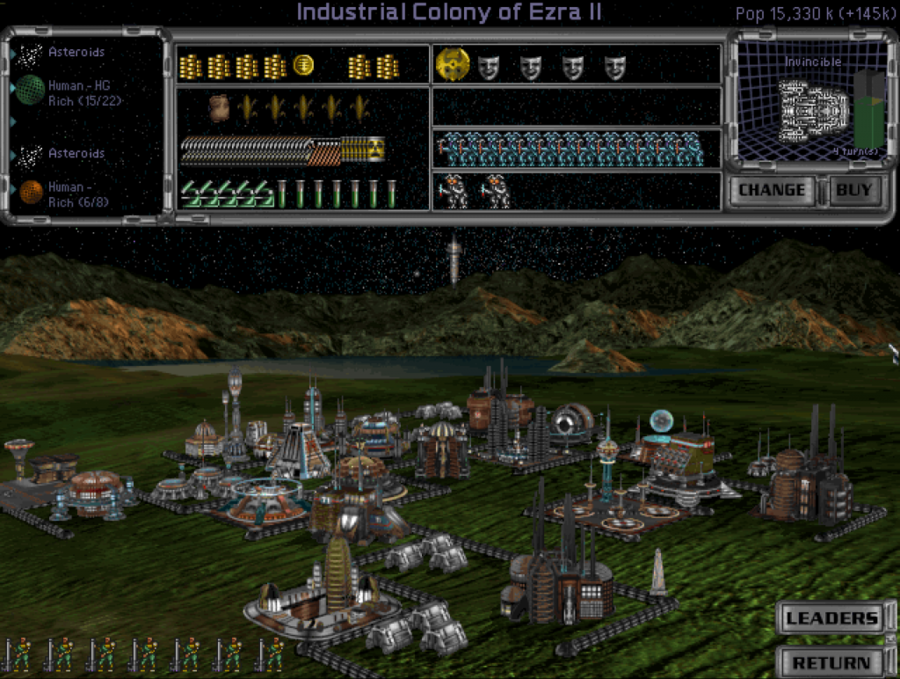
Ezra Alpha continues to have an economy largely driven by Naval spending, with growing populations having helped permit an expanded heavy industrial workforce. The Invincible is over half-completed over the planet.
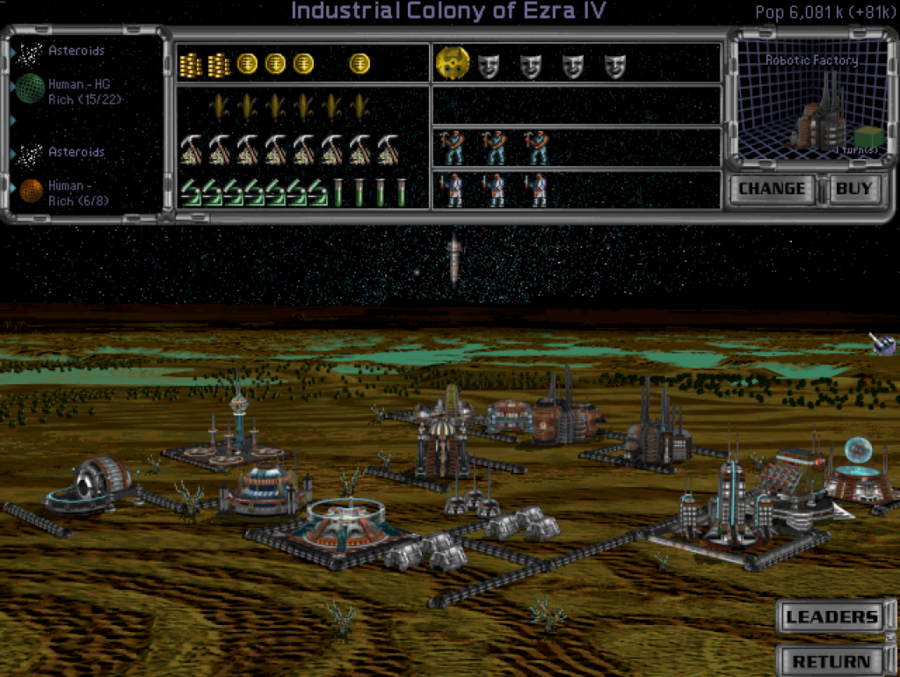
Growing populations filling labor demand have allowed work hours to drop back down on Formica, and deep mining into the planet ensures local industry has a rich supply of raw materials. Ecological engineering has resulted in the melt-off of much of Formica's ice cover, and the development of deep cold oceans over much of the surface. The standard of living is generally higher than a decade ago. New advanced foundry complexes to process the output of Formica's mines are under construction, and are anticipated to be highly profitable ventures.
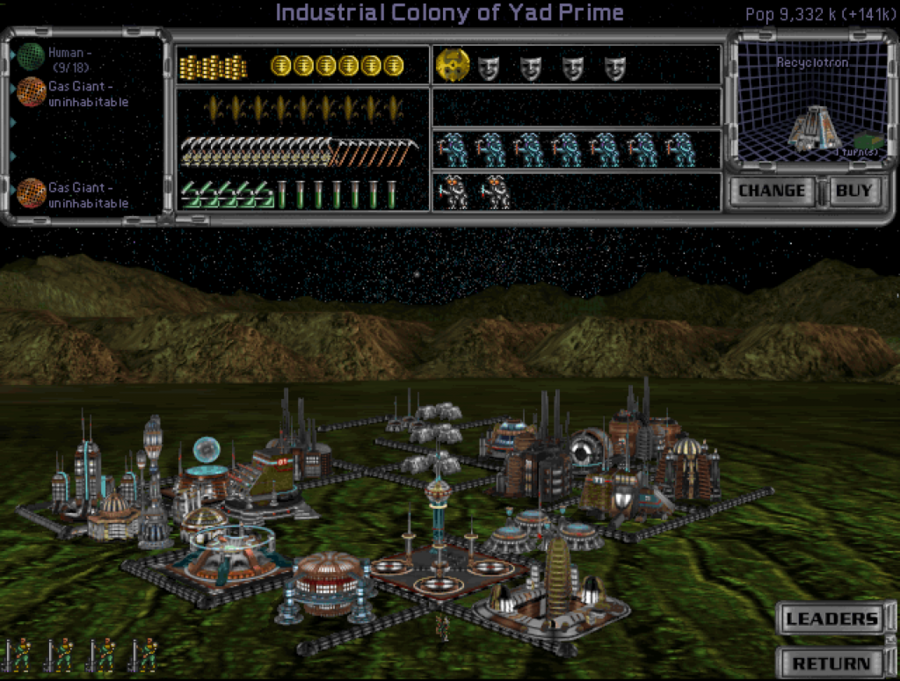
Yad Alpha's biosystem and climate have stabilised at Earthlike conditions after the last ecological engineering project on the planet, and new foundry complexes and deep mines have greatly bolstered its industrial wealth. Factories taking advantage of advanced recycling should be in business on Yad Alpha within the year.
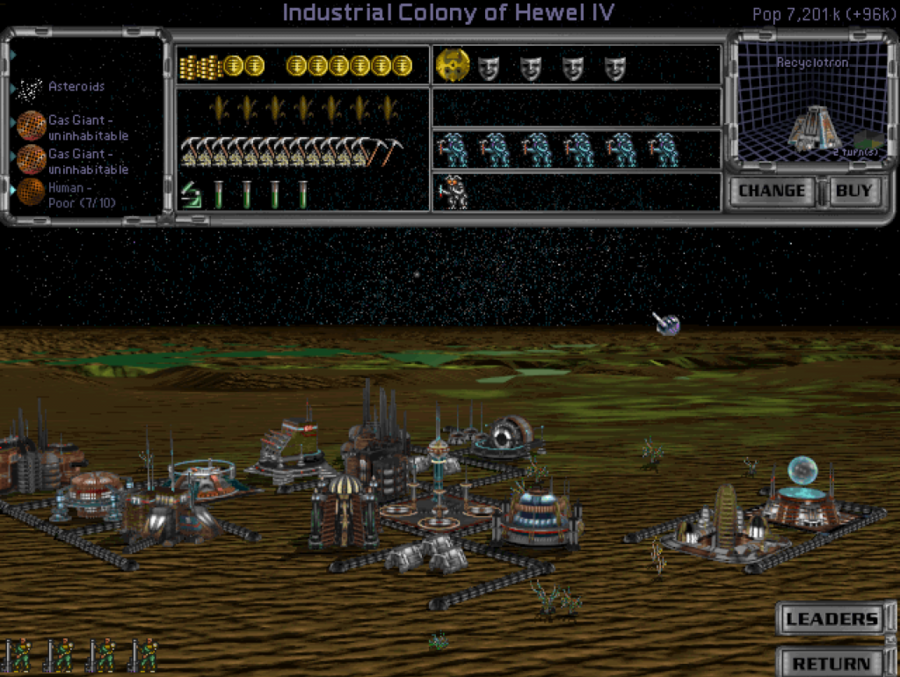
Hewel Alpha, like many other worlds, has introduced new advanced foundries and deep mines over the past decade. Ecological engineering has provided it with a thicker, warmer atmosphere, a more complex and fertile biosystem, and a significant meltoff of ice cover to provide oceans for the world. Advanced recycling methods are being incorporated into new factories over the surface.
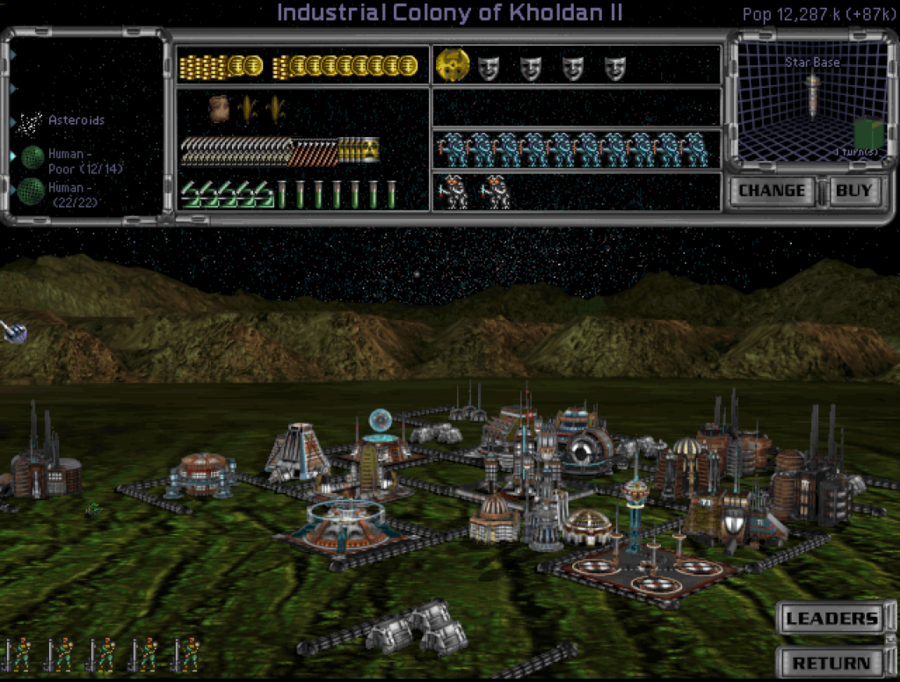
Kholdan Alpha has taken immense strides over the past decade, having developed its economy largely to core world standards, with access to all advanced industrial technologies, consumer positronics, and an ATLASBUILT educational system instituted by TAXIK ATLASBUILT, a new ATLABUILT AI on Kholdan Alpha. TAXIK is named after one of a series of deities from a popular fantasy novel series that has swept Klackon space over the past decade, The Cities of the Ancients. The series posits a fictional period in ancient Klackon history where Klackon were a free species, divided into many city-states with patron demi-gods that traded and warred with each other. The city-states find themselves forced to unite to fight against a seemingly insurmountable foe, the Enslaver, a dark god leading a new nation of Klackon following the historical hive pattern of Klackon biology. The synthetic mythology for their species has proven striking and moving to many Klackon. TAXIK depicts itself as a modern Klackon of proud bearing, wearing utility belts and carapace decoration appropriate to a white-collar worker.

With new deep mines and AI-administered heavy industry, Hive now is a fully-developed core world of the Republic. Although competition from AIs has displaced much of the Klackon involvement in heavy industry, a core of Klackon industrial workers still keep manufacturing concerns afloat in competition with AI labor, while investment has bolstered both the agricultural and research sectors on Hive. Local industrial output flows into the Republican civilian economy, used either by local consumers or traded throughout the United Republic.
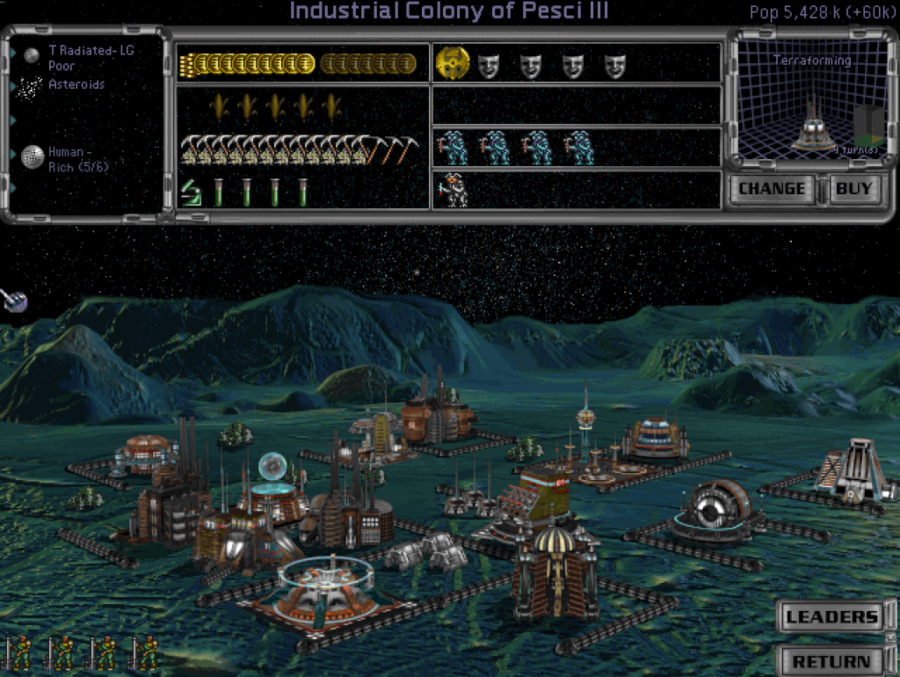
Advanced recycling, advanced foundries, deep mines, and widespread consumer positronics have all been adopted on Pesci Beta over the past decade, pushing up local earnings and supplying conveniences for many of the local inhabitants, although the world is now sadly plagued by consistent overtime for many workers and intermittent breakdowns from overworked facilities. A program of ecological engineering has already introduced significant quantities of frozen surface water, a basic biosystem, and an atmosphere that can be breathed with some difficulty, and a second round of ecological engineering to thicken the atmosphere, increase temperatures, and improve the fertility of the biosystem is under way.
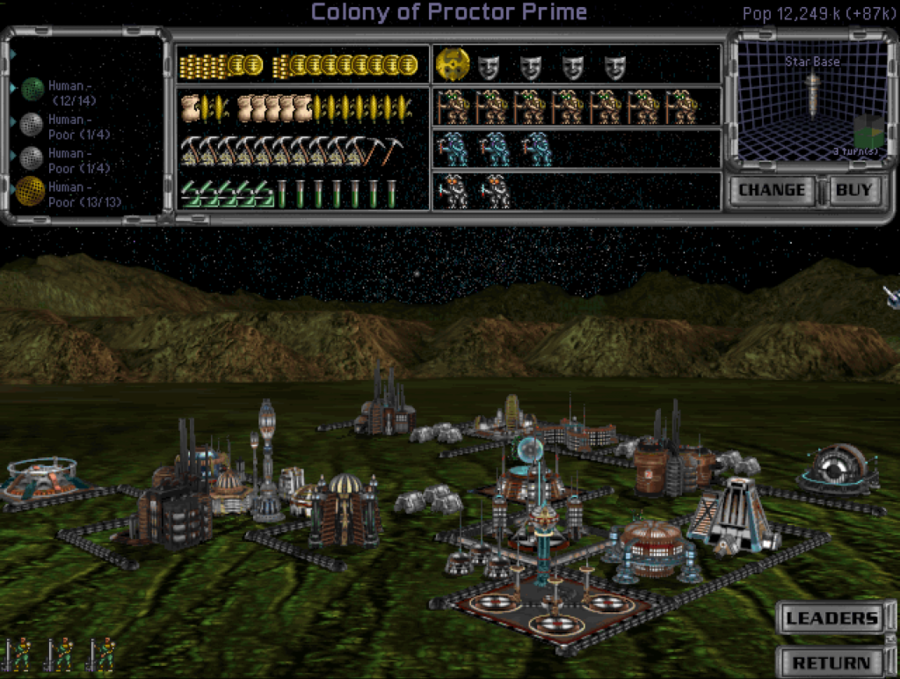
New deep mines and factories taking advantage of advanced recycling have helped bolster Proctor Alpha's economy over the past decade, although emigration to found new colonies in the Proctor system has caused a slight dip in Proctor Alpha's population. A new Naval orbital station is under construction over the planet.
Since any new colony in our empire defaults to Human population, creating new colonies whose inhabitants are one of our other species involves shifting existing population off an old colony, then shifting the Humans back to a Human colony. A small complication from the fact that you can't specify what population you want to load into a new colony ship or colony base.
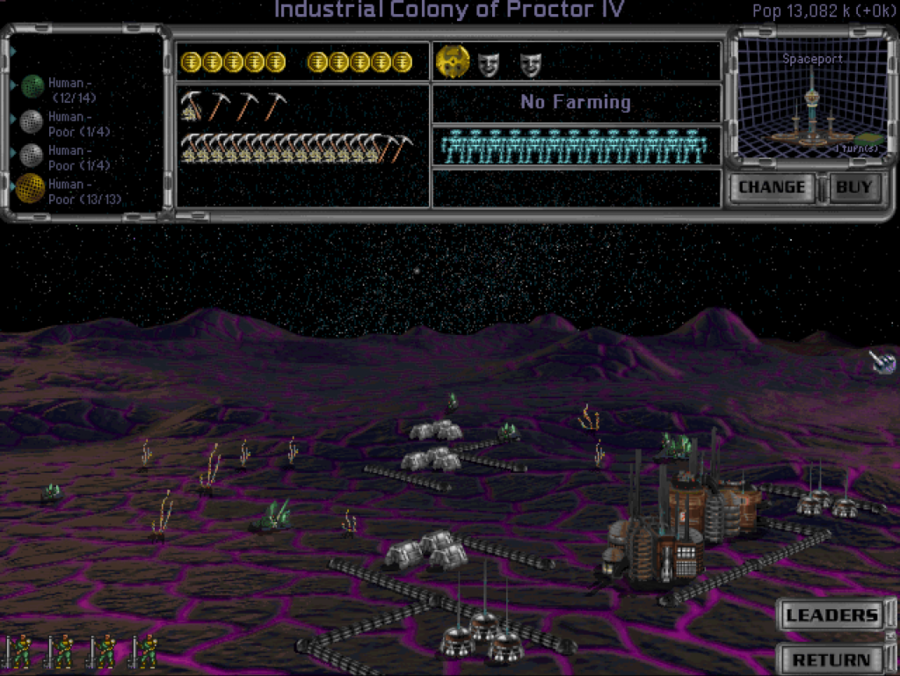
Proctor Delta now houses 6.5 million industrial AIs with a modern industrial infrastructure that supports Puppeteer technology. New commercial stations to support trade in luxury goods created by local light and precision industry from the rich precious metals deposits here are under construction.
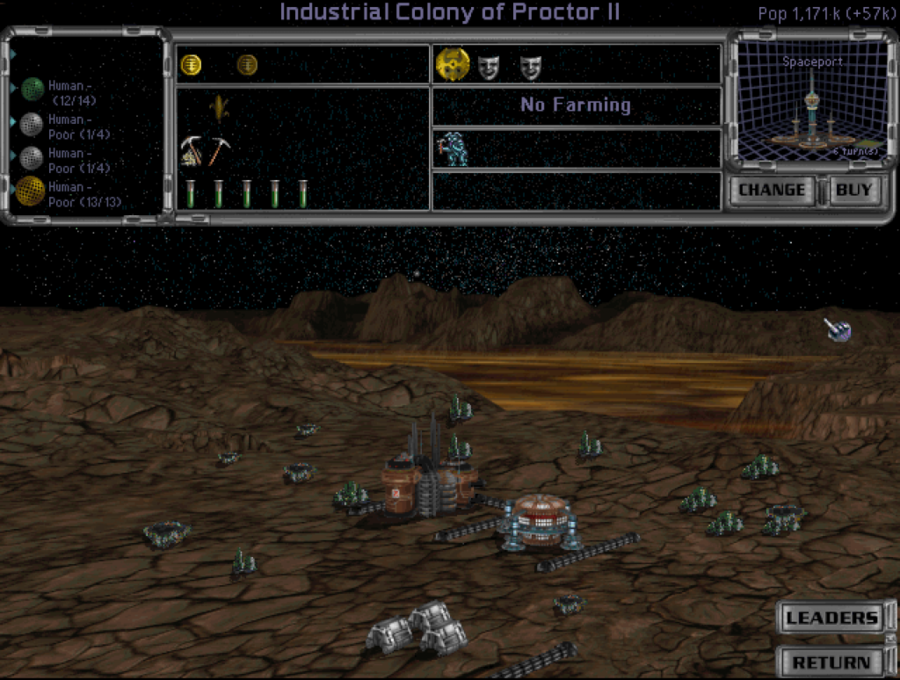
Proctor Beta is an infant colony world whose Klackon inhabitants labor long hours to support a basic modern industrial infrastructure and a local technology and R&D sector. It is still quite primitive and undeveloped. Spaceport facilities and orbital warehousing are being established on the planet.
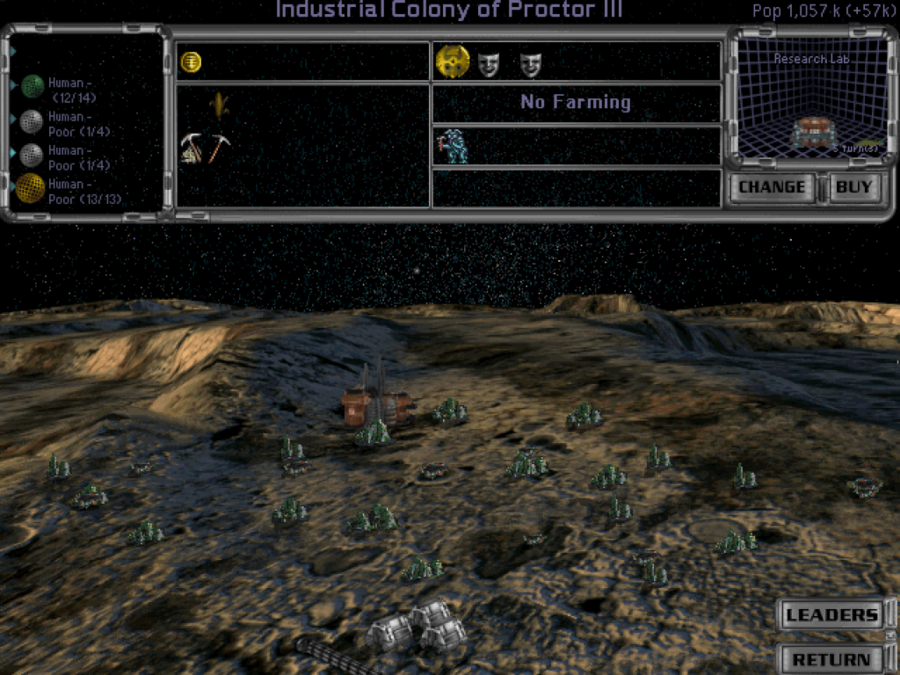
Proctor Gamma is even younger and less developed than Proctor Beta. It supports only the basics of modern Republican industry for now.
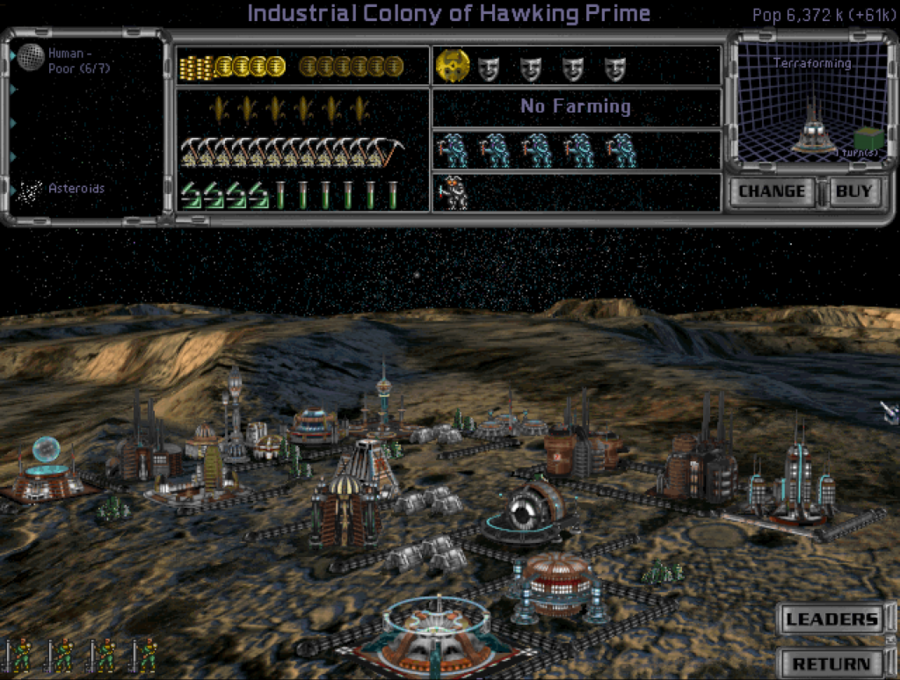
Expanded industrial infrastructure, new pollution processing, and an educational system administered by TIKIK ATLASBUILT have greatly bolstered productivity on Hawking Alpha, although minor industrial accidents have grown more common as the expert workforce has been stretched more thin. TIKIK, like TAXIK, is based on a patron god from the Cities of the Ancients. It depicts itself as a Klackon in laboratory protective gear.
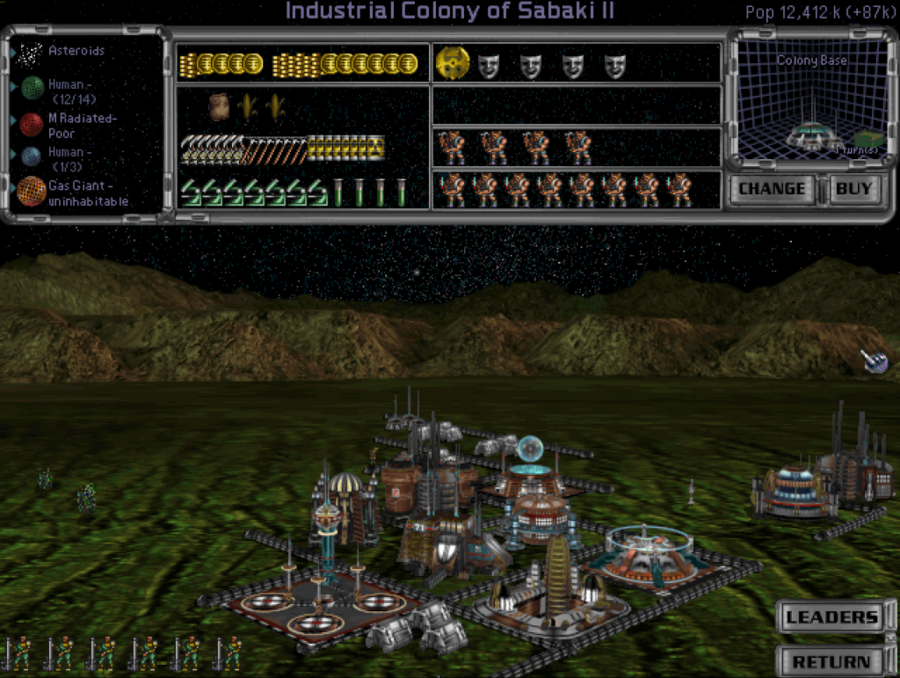
Widespread penetration of consumer positronics through the population of Hrrset has brought luxuries and advances in entertainment Mrrshan could not previously imagine, and new deep mines have greatly reduced raw material costs for local industry. Settlers are preparing to establish a new colony on Yewell, the last uncolonised body in the inner system of Sabaki. Demand is growing for improved methods of dealing with industrial waste on Hrrset, which has now seen an increase in waste produced as its heavy industry has expanded.
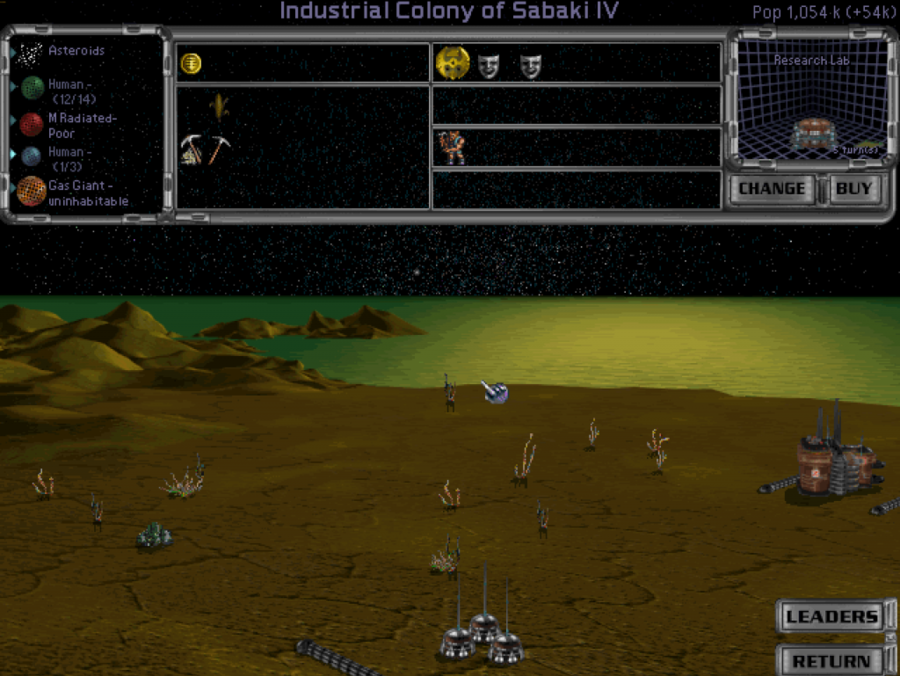
Srral is a typical infant Republican colony world with basic modern industry, save for the fact that the settlers on Srral are Mrrshan rather than Human.
Although Mrrshan are strictly economically inferior to Humans in this game, given the research bonuses that Humans have now, it seemed more appropriate to have Srral be a Mrrshan colony rather than a Human colony, all things considered.
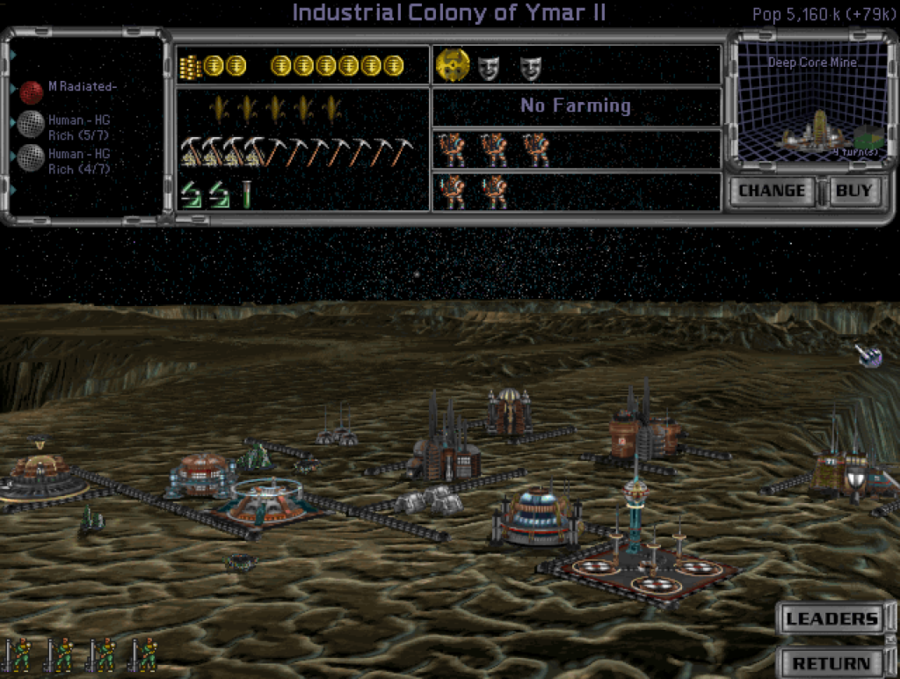
Modern Republican business methods, Puppeteer deployment, and waste treatment facilities to address the increased amount of waste produced by Miyahar's growing industrial base have increased the world's wealth and productivity greatly, and new arcology-cities have allowed its population to once again start growing. Deep mines into the mantle are under construction.

The past decade has allowed Srriar to deploy Puppeteer technology in local mining and construction, establish new pollution processing facilities, and establish spaceports and orbital warehousing sufficient to properly link it into the web of Republican trade, while developing arcology-cities that will permit its population to continue to grow. Modern Republican business methods are beginning to revitalise the economy on the world and ensure that resources on the planet are efficiently deployed.
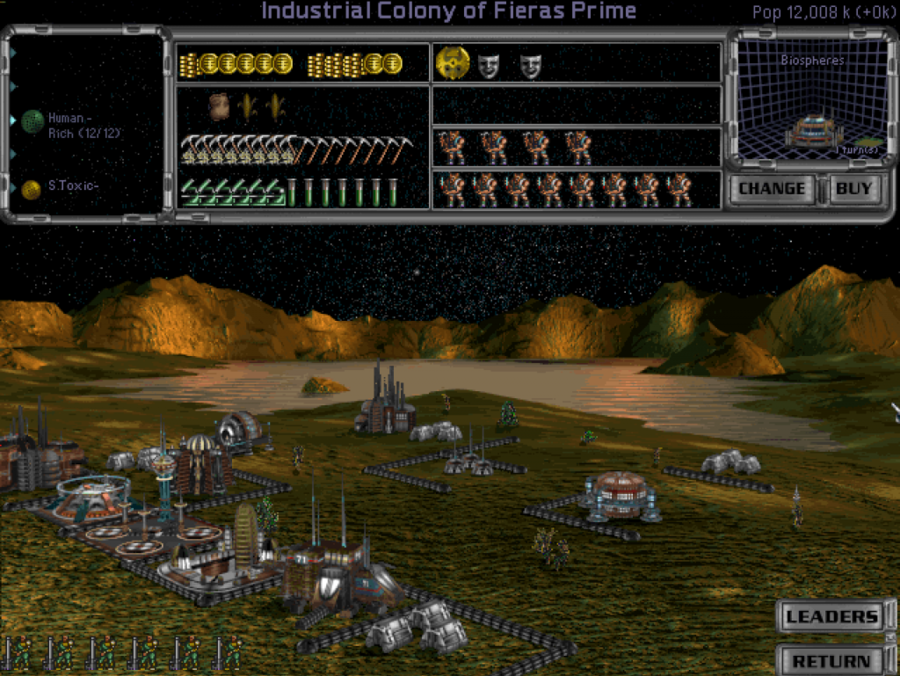
The Leader and the last of his partisans have been captured and sent to trial, marking the end of the last traces of the Unified State. Radesh has begun to develop a modern Republican economy, supported by Puppeteer technology and deep mines, while atmospheric scrubbing plants have addressed the industrial waste created by expanded industry. New arcology-cities are being built on Radesh, ensuring that the population can grow at least somewhat more.
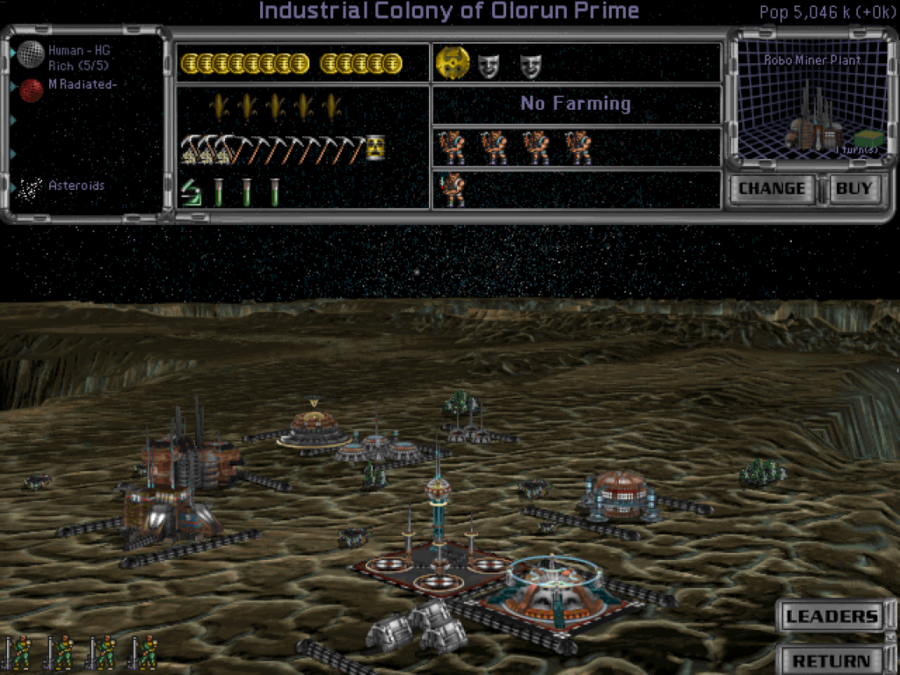
Yileria has benefitted from the past decade of life under the United Republic, with expanded port facilities, new technology industries supporting local research, pollution processing facilities nearly eliminating the need to sequester industrial waste, and radiation shielding protecting the world from the ravages of stellar input from the system primary. Puppeteer technology is being deployed across the planet in mines and construction sites, and should further boost the local economy when it is in widespread use.
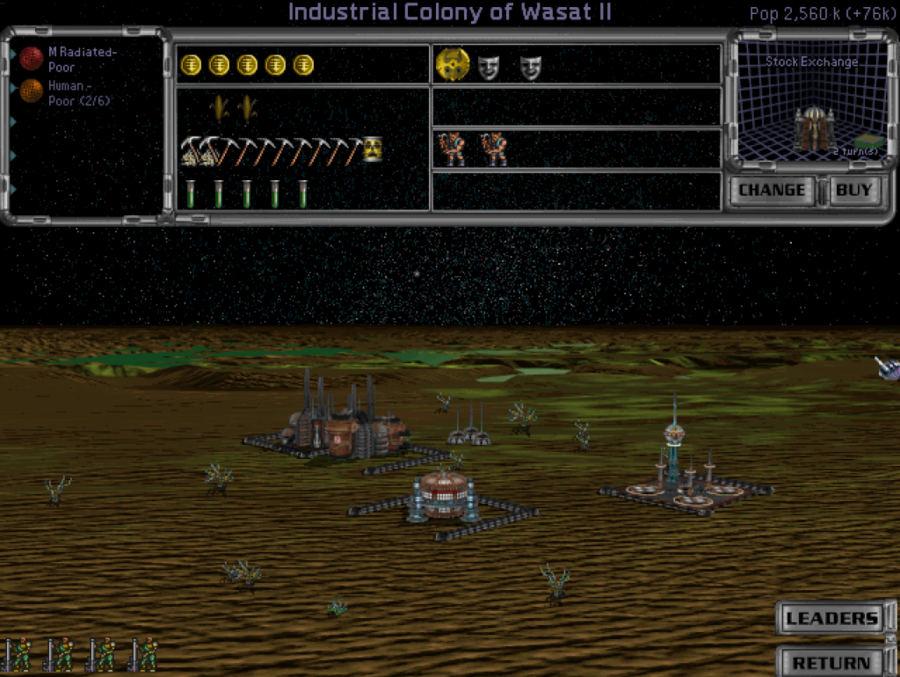
Expanded spaceports, a local technology and research sector, and Puppeteer technology in use for mining and industry have helped expand Vreer beyond its humble beginnings. Modern business methods and a greater diversification of the local economy should help continue increase local incomes into the future.
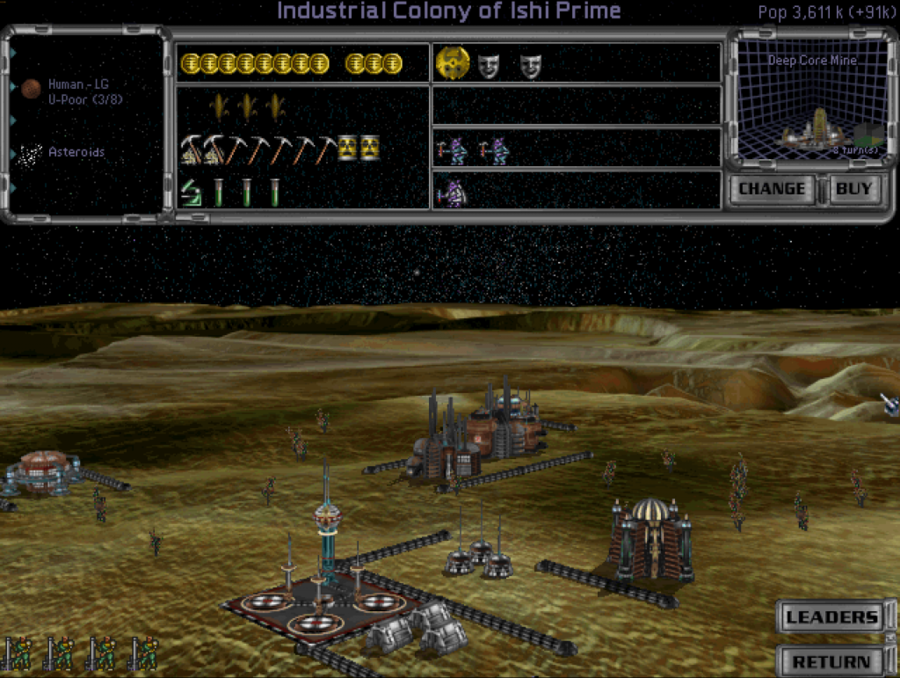
Kelb's economy has boomed over the past decade, the Gnolam here taking to a modern Republican economy with vigor. Local industrial and economic development is much stronger, and a local technology industry strengthens R&D by the Gnolams here. Ecological engineering has moderated the local climate to a pleasant, if dry, state, and Gnolam populations are beginning to climb. Deep mines to further bolster industrial output should be completed soon. There is a growing consensus amongst many of the remaining priests of the Church of the Compact that the Republican intervention against the military dictatorship over the Gnolams was divinely-inspired, and that the fall of the Commonwealth has been a sign that the Creator does not wish for a theocratic government to continue into the future. They still believe the duty of the Church to continue to preach to the unbeliever is unchanged. Gnolam assimilation into the United Republic has seen growing missionary efforts by the Church amongst Humanity.
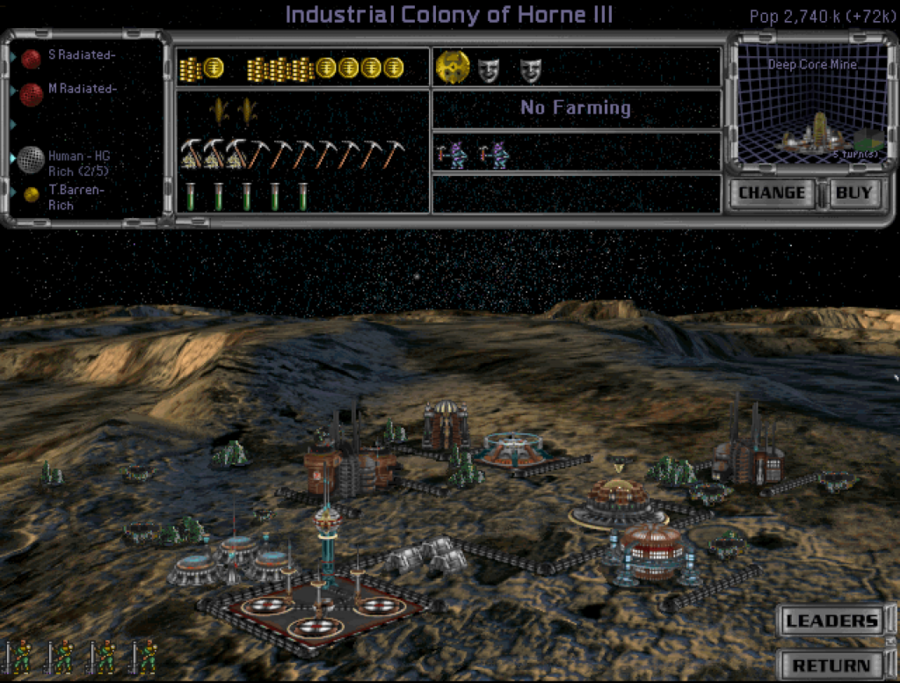
As on Kelb, the Gnolams on Val have rapidly adopted modern Republican economic methods, and the planet has prospered as it has emerged from dictatorship and built up its industrial and economic base. Radiation shielding renders the planet safer and more comfortable. Like Kelb, Val is building deep mine tunnels into the mantle, helping to bolster its industry.
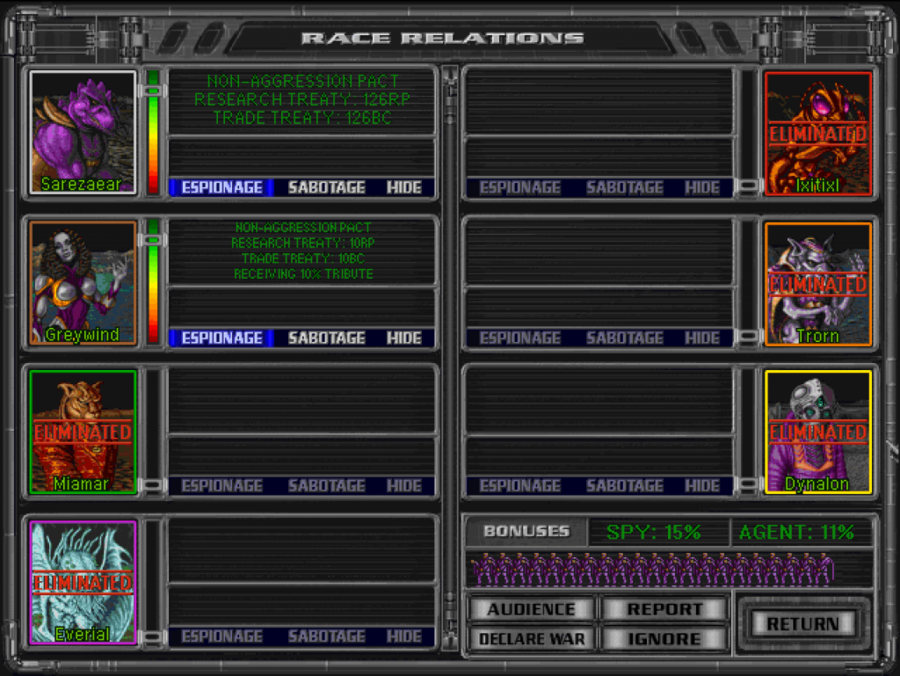
Foreign trade with the Nations has increased slightly, but the foreign situation otherwise has remained essentially stable over the past decade.
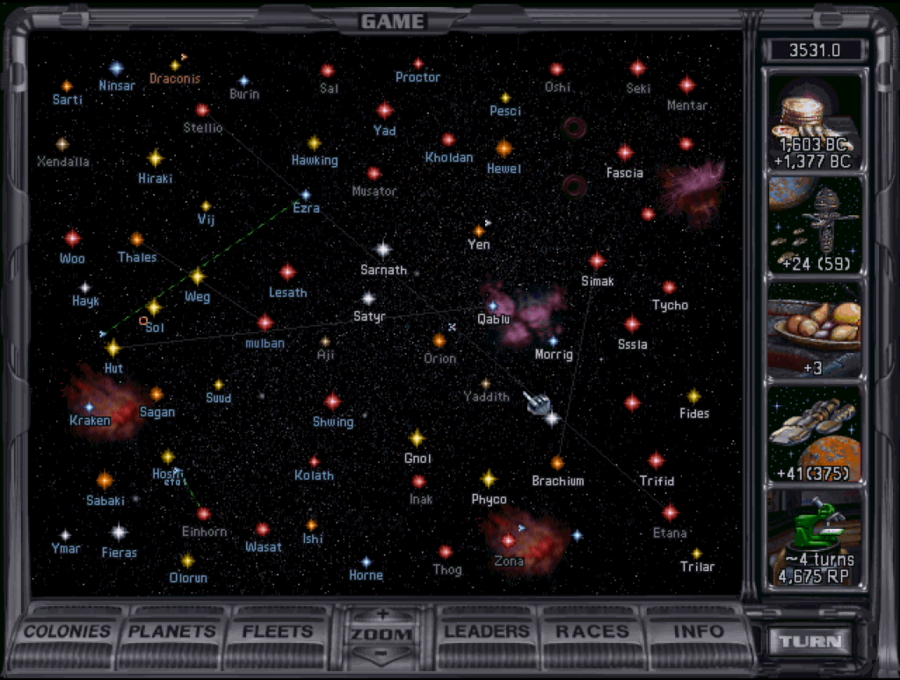
New communications technology has helped naval logistics be administered more efficiently, innovation in the United Republic continues to grow, and investment capital available has increased massively with the great expansion of trade, consumer manufacturing, and capital goods manufacturing within the United Republic. The tractor beam technology developed twenty years before has been integrated into the cargo handling of spaceports across the United Republic. The entire mobile combat force of the Republican Navy, along with a colony mission, is being dispatched to Ezra to rendezvous with the Invincible. Once the Invincible is completed, the fleet will be dispatched to Orion to investigate the mysteries of the world there and confront its Guardian. A colony mission is en route to Einhorn, filling in the last blank space within Republican borders.
Economic policy remains essentially uncontroversial as the 3010 elections approach, with trade and investment being allowed to bolster Republican growth while the Navy continues to build up for an eventual mission to the dimension of the Antarans. There is, however, some controversy over proposed naval research. Williamson-Lin plans to develop new advanced small craft suitable for surface-to-orbit deployment with much greater durability and firepower than the current generation of small craft. Republican Atlantic, on the other hand, wishes to develop much heavier orbital stations for the Navy which could support larger logistic efforts, increased Naval staffing, and which would, themselves, be stronger fortifications than the existing orbital stations.